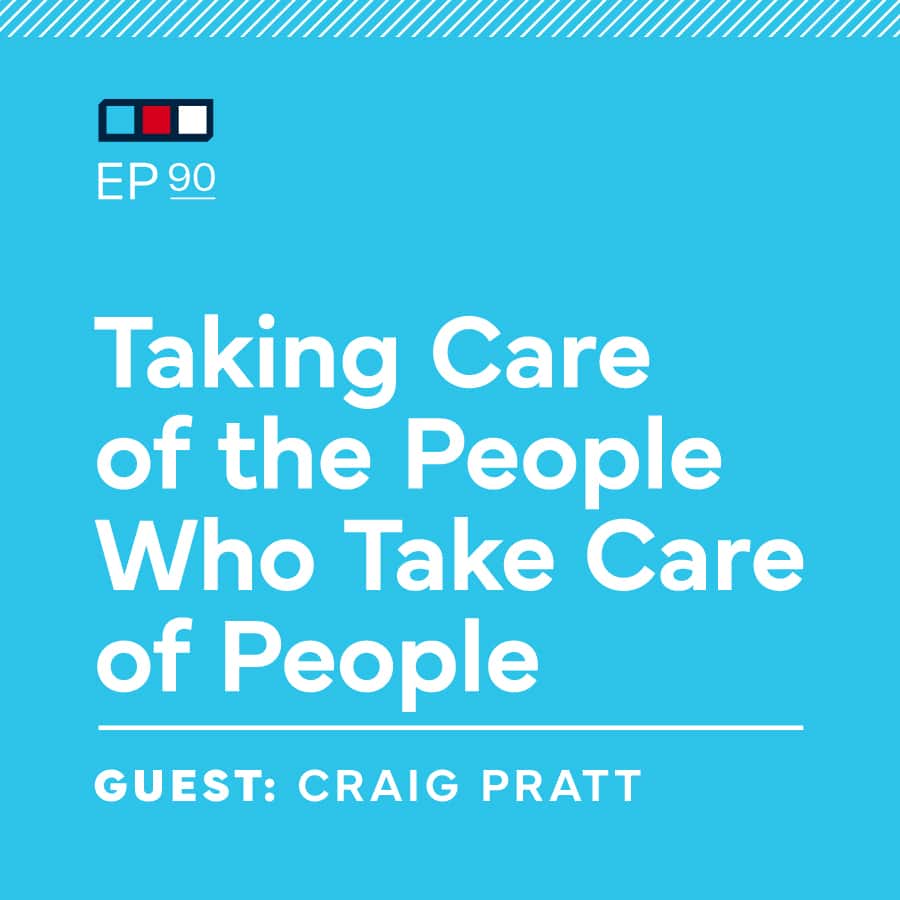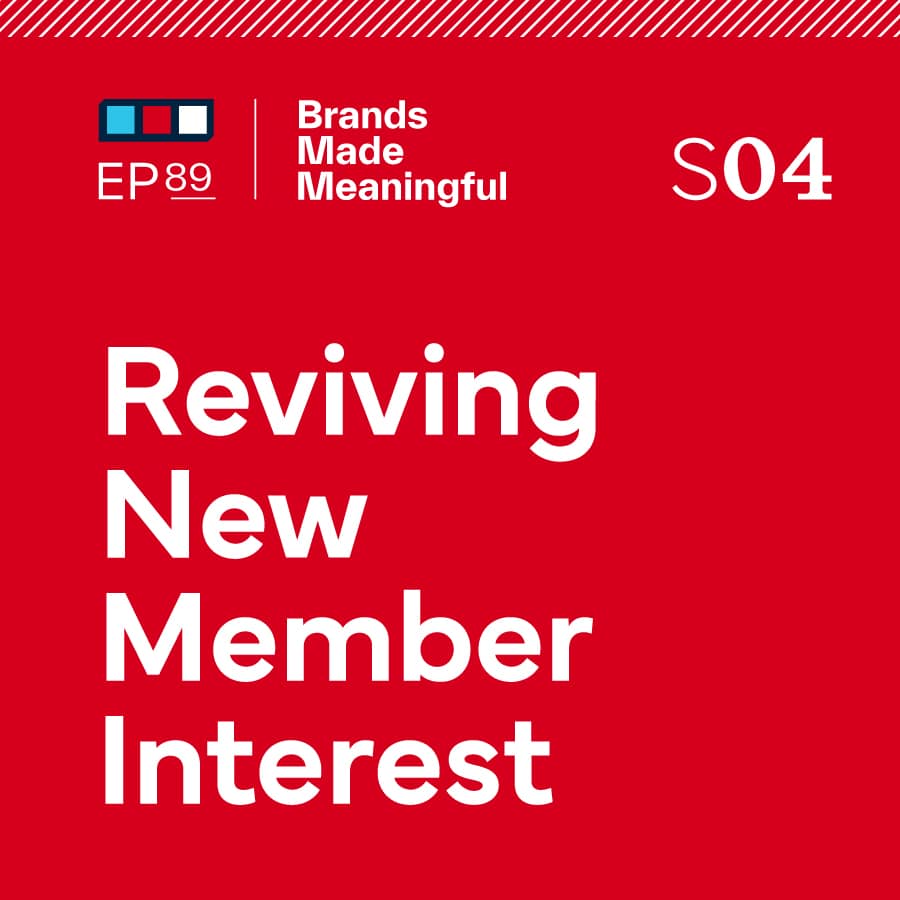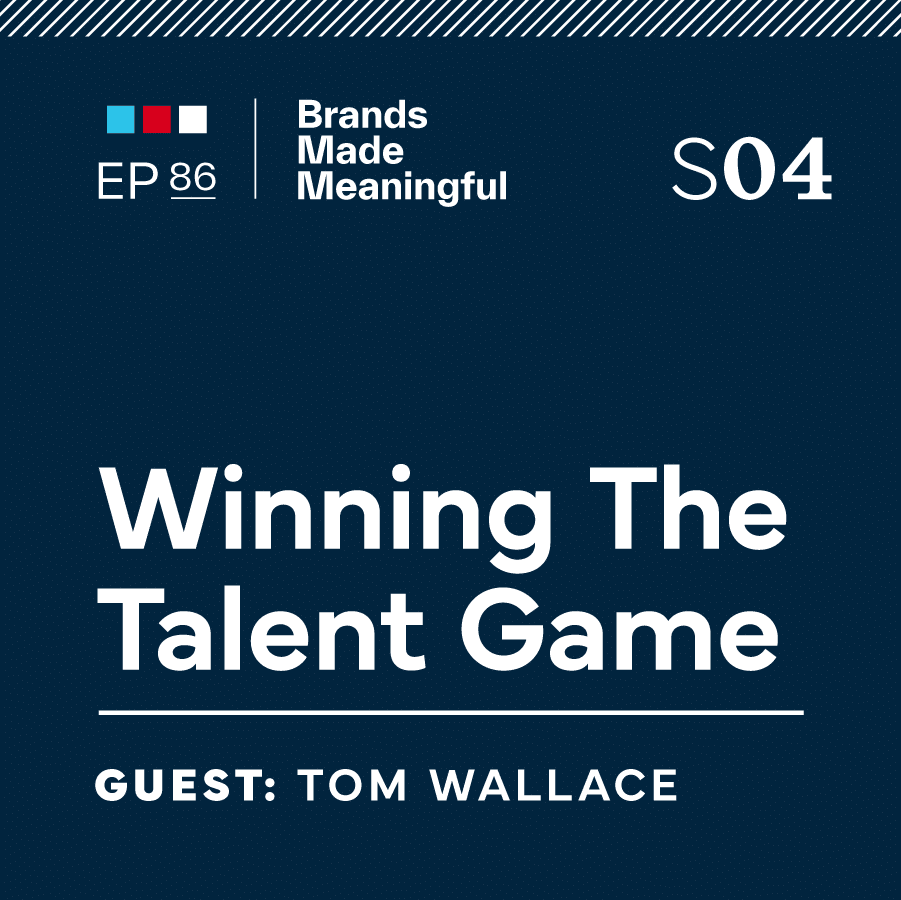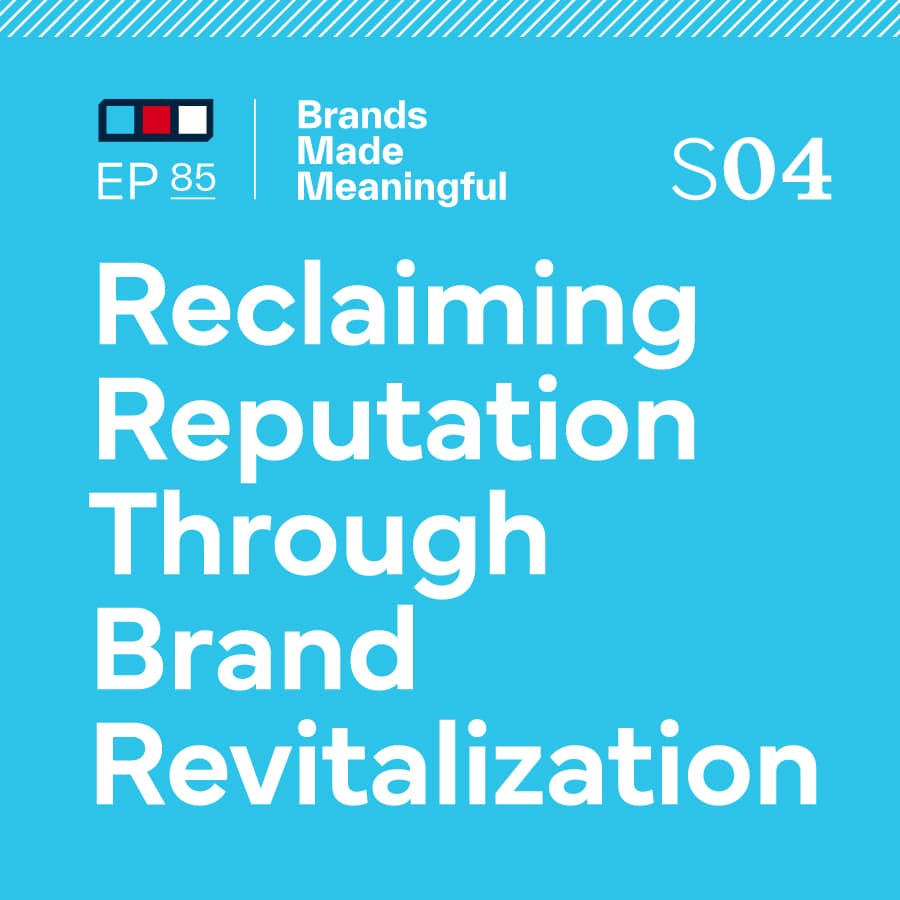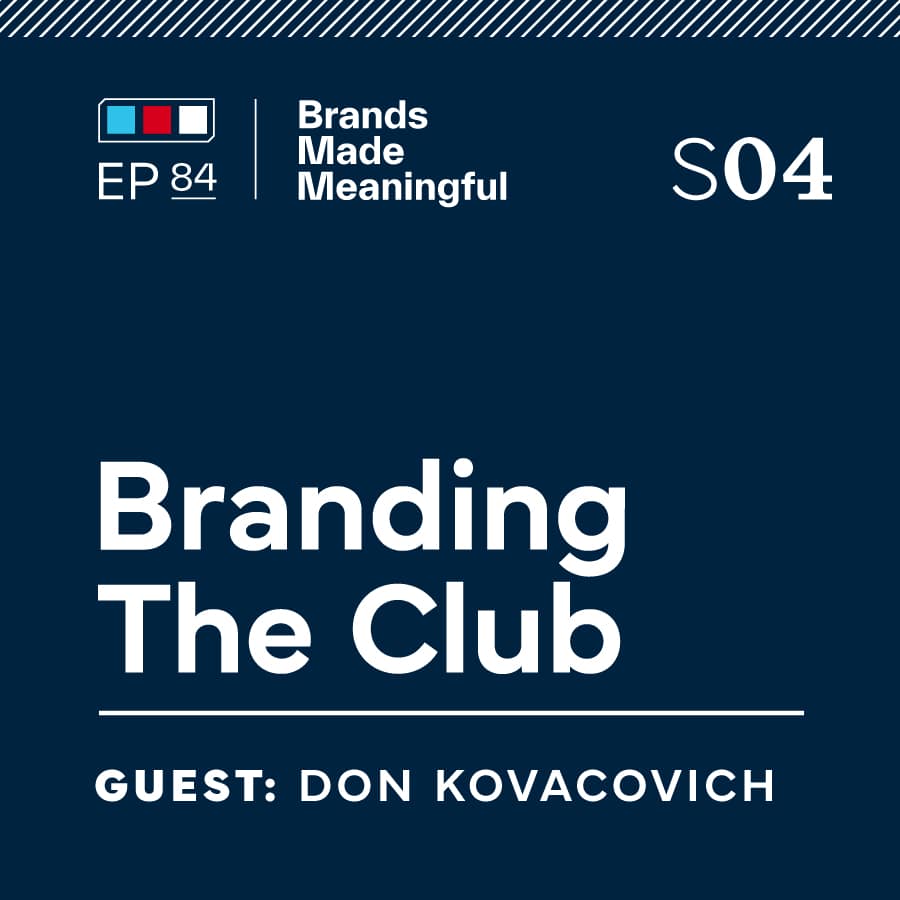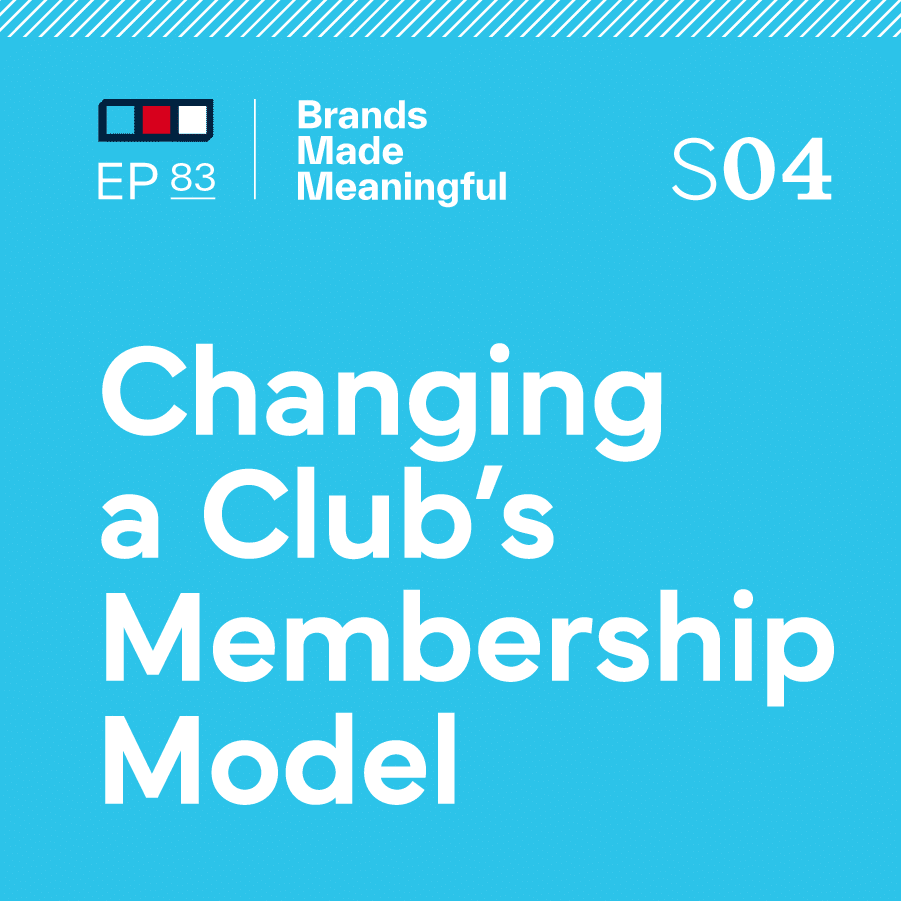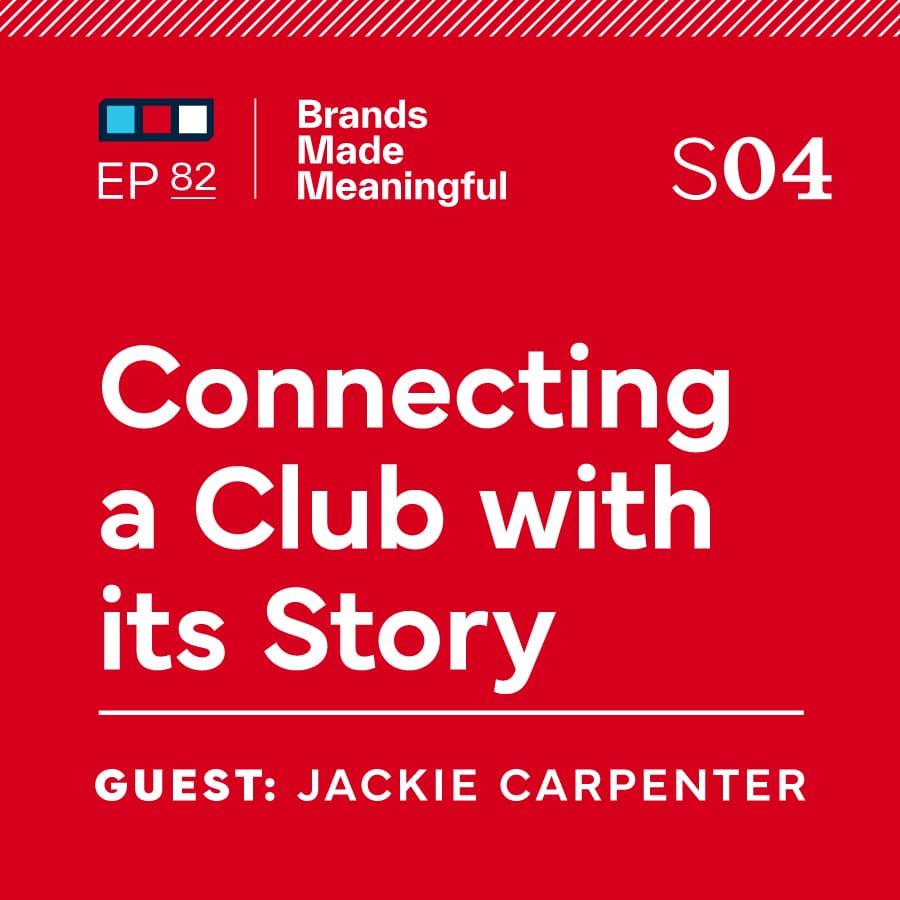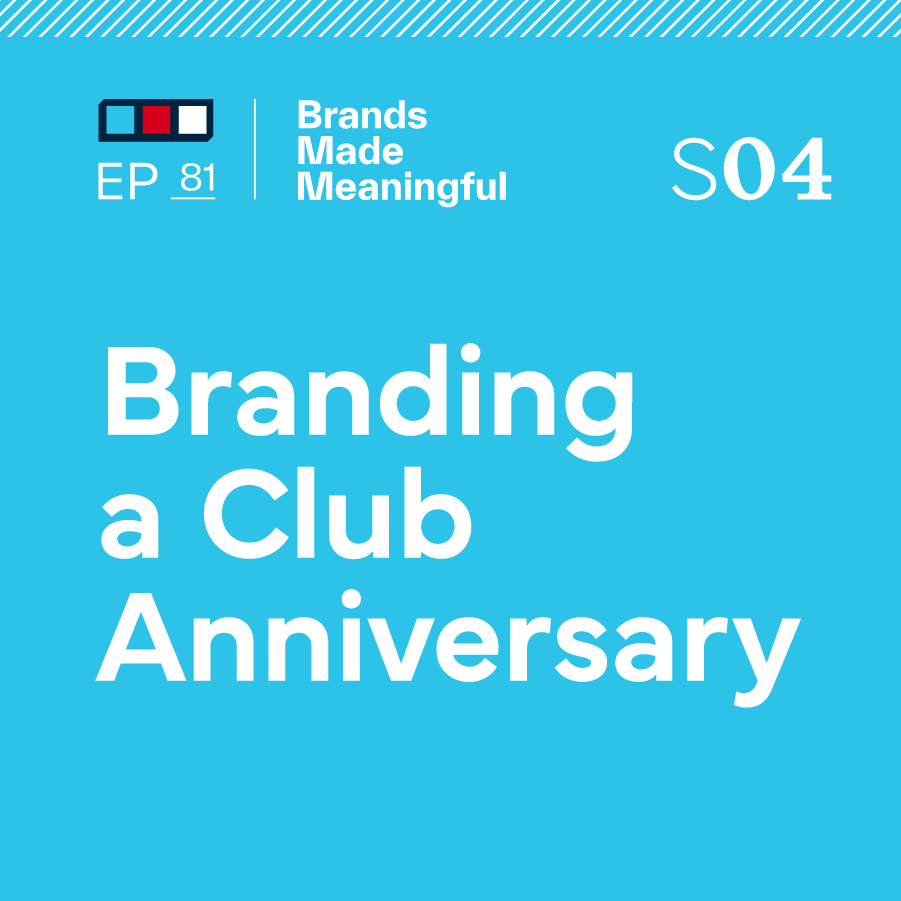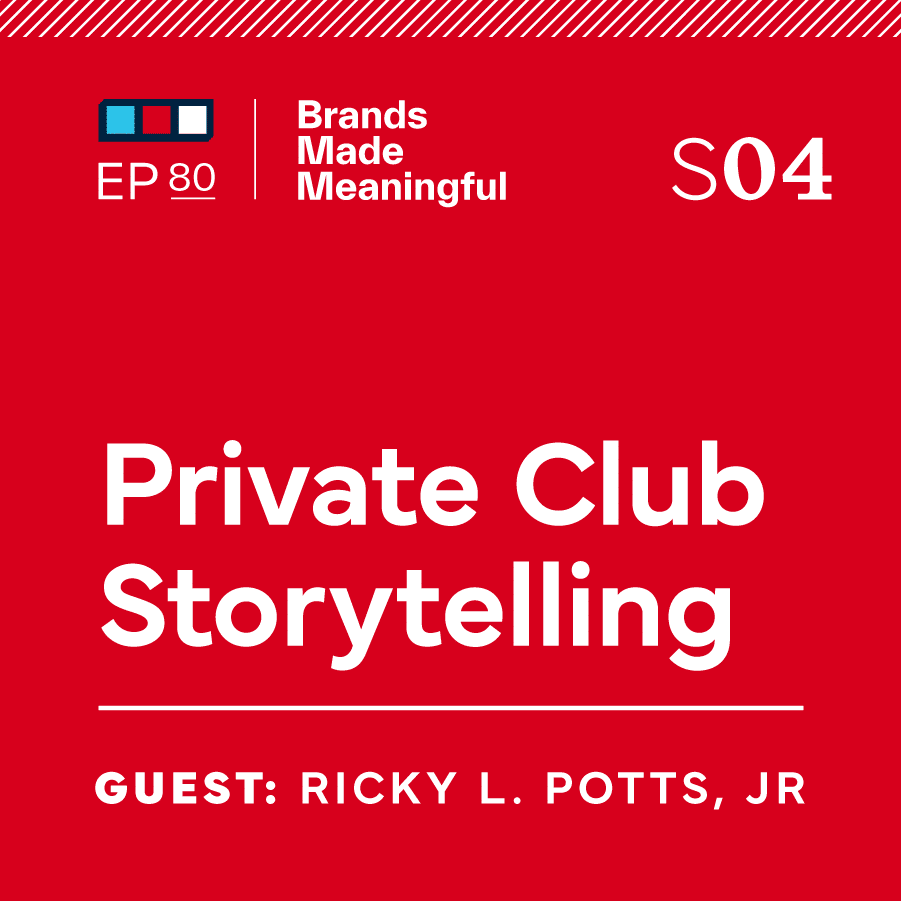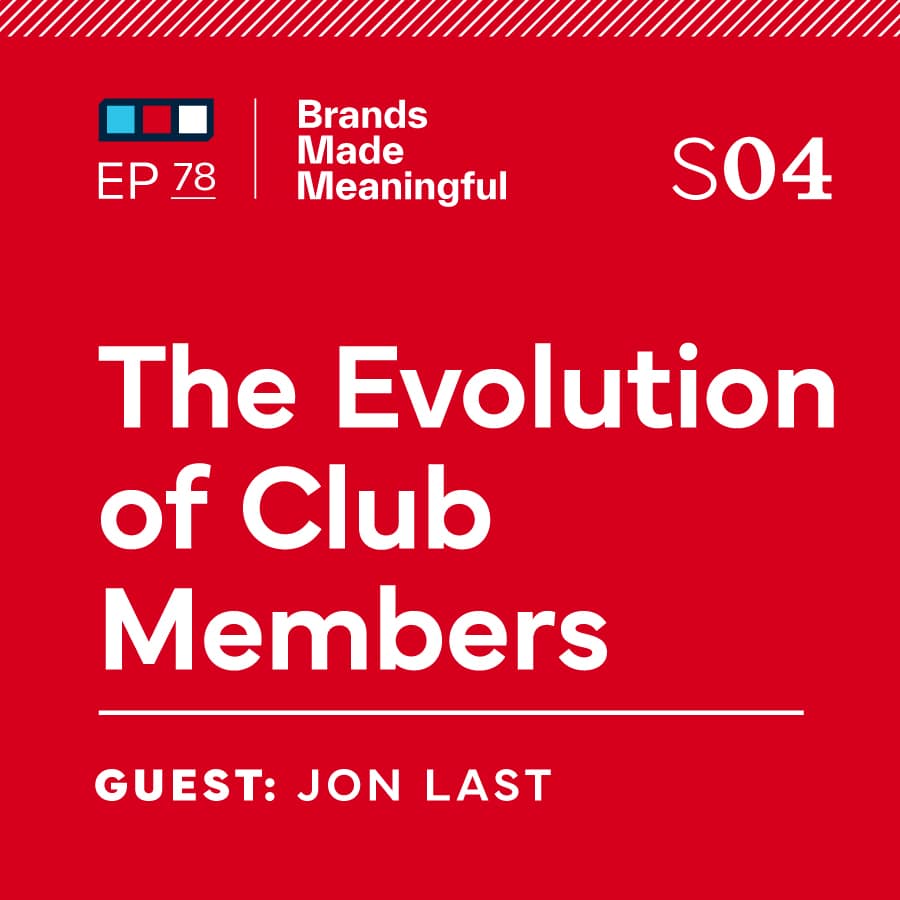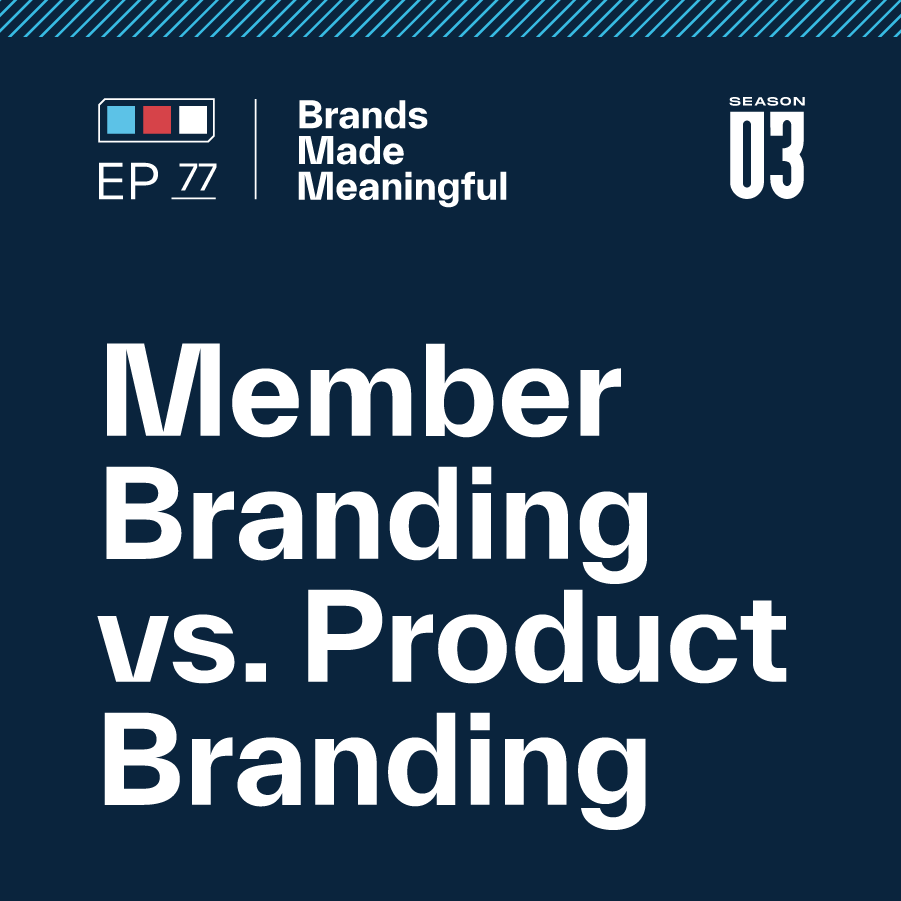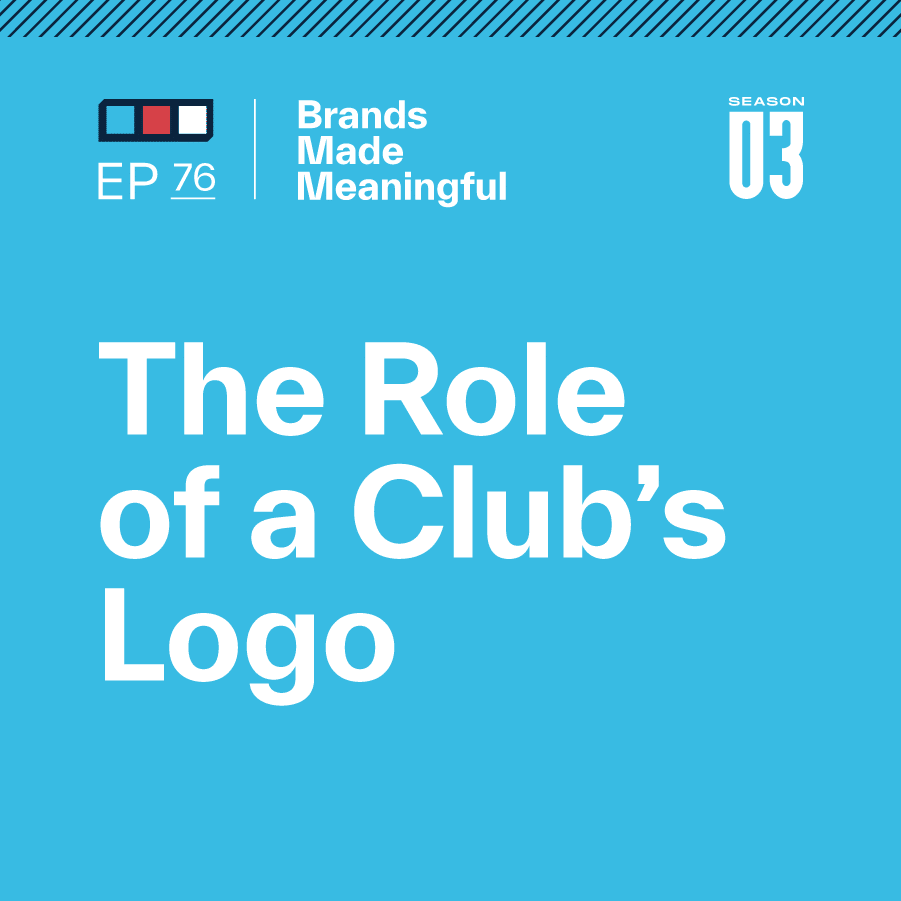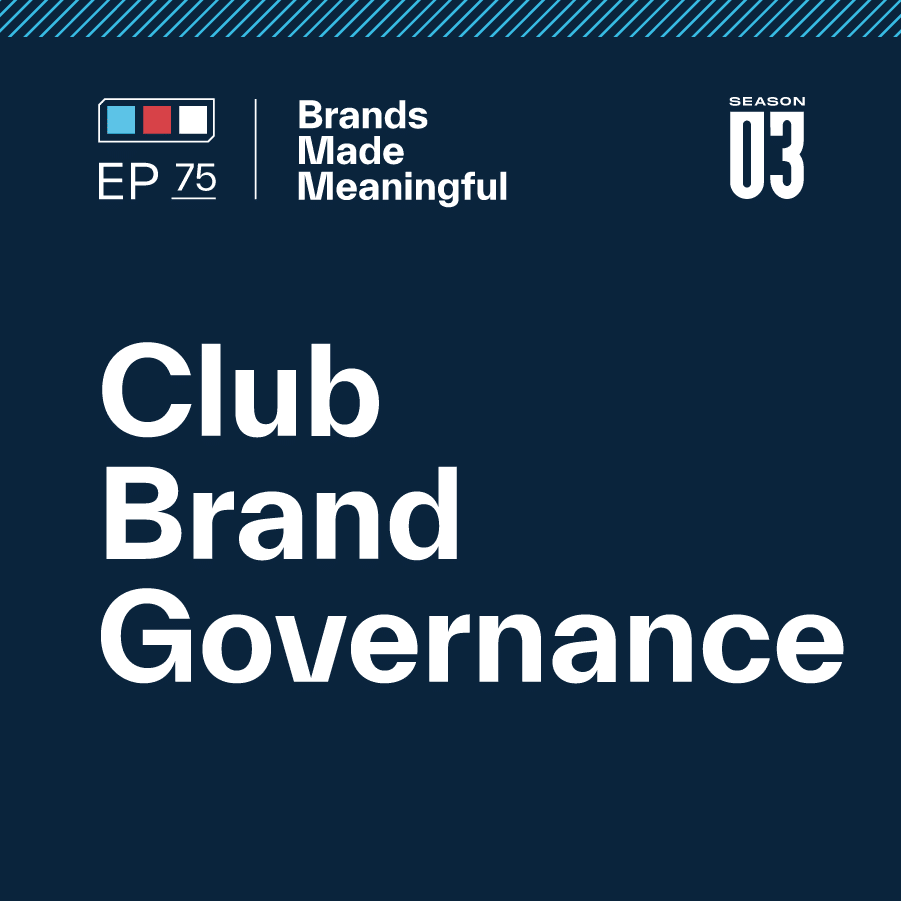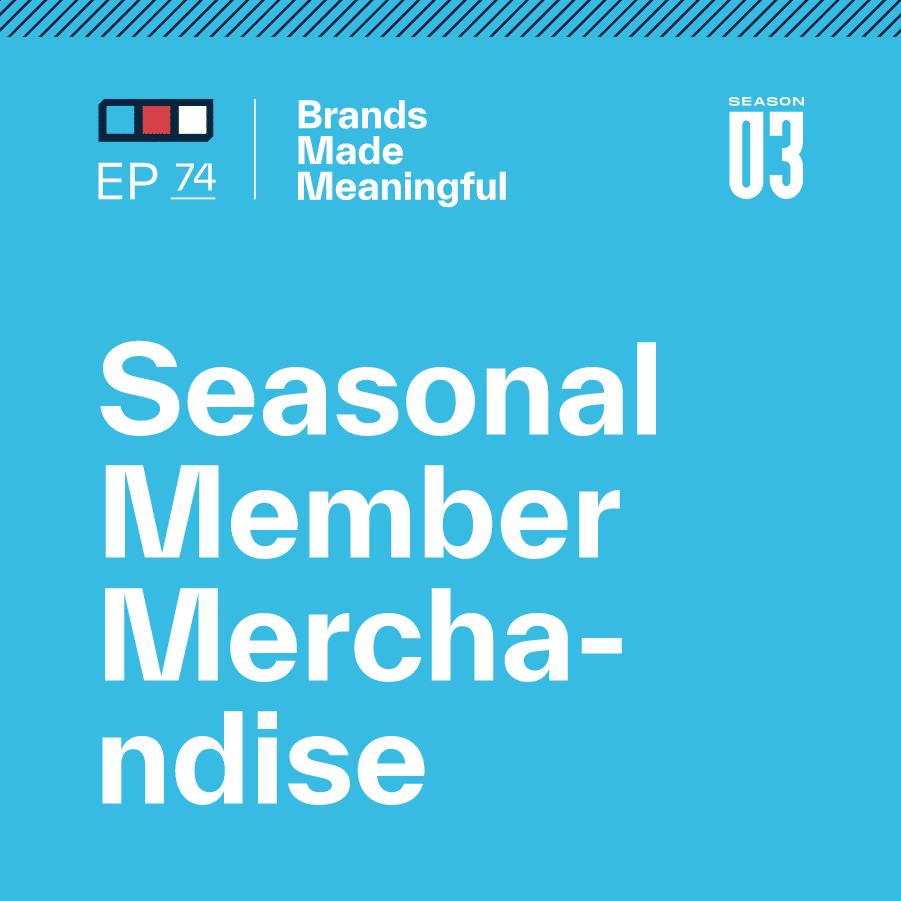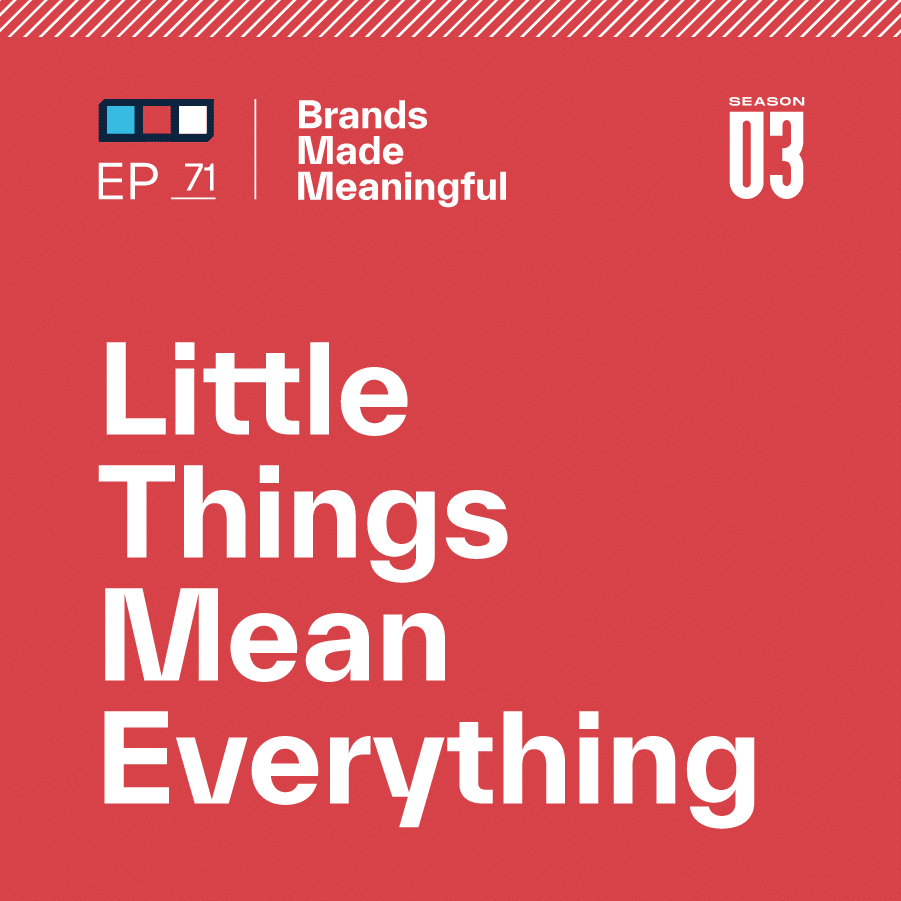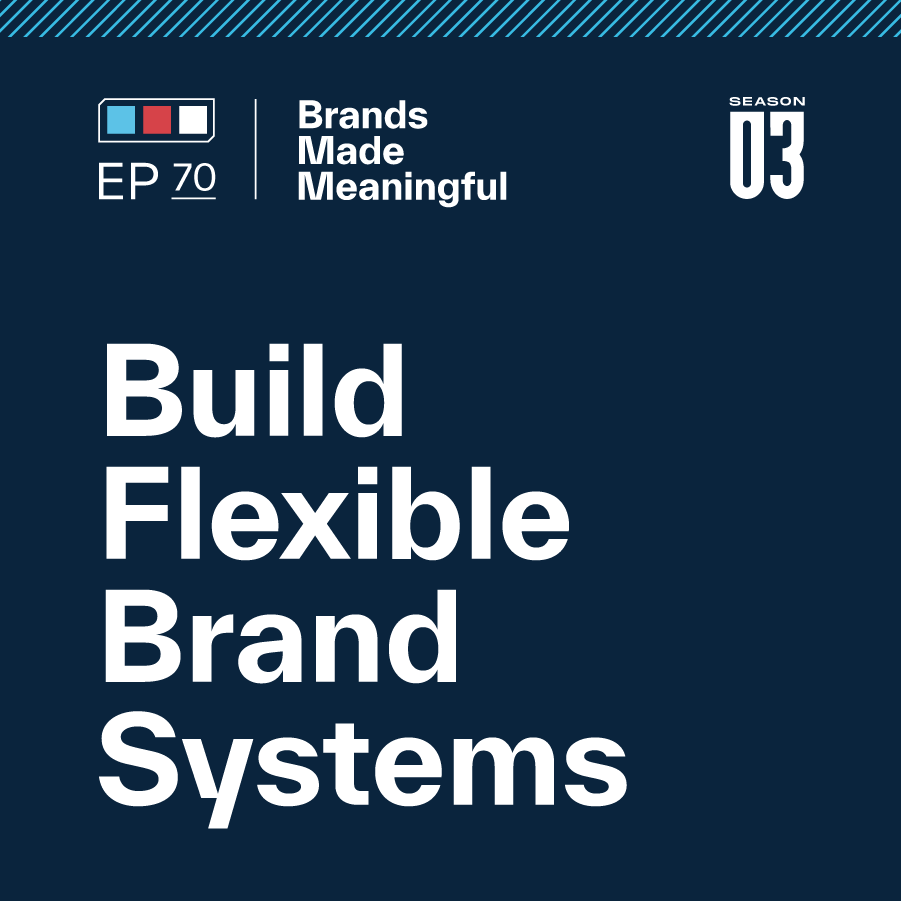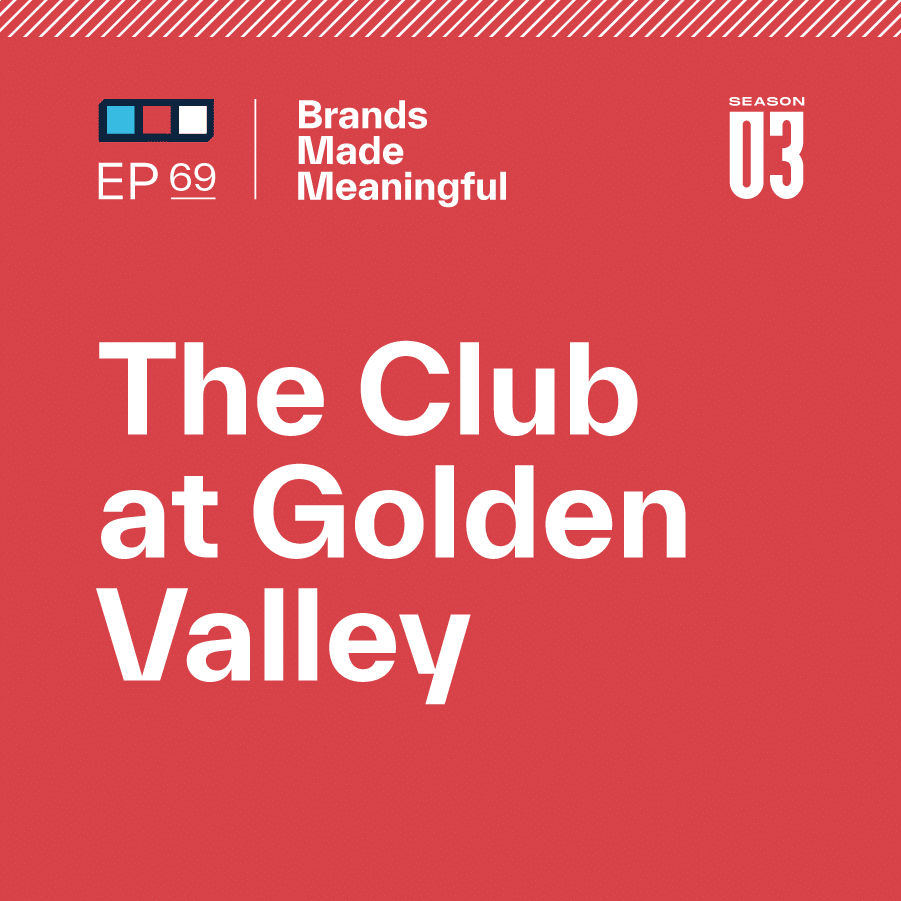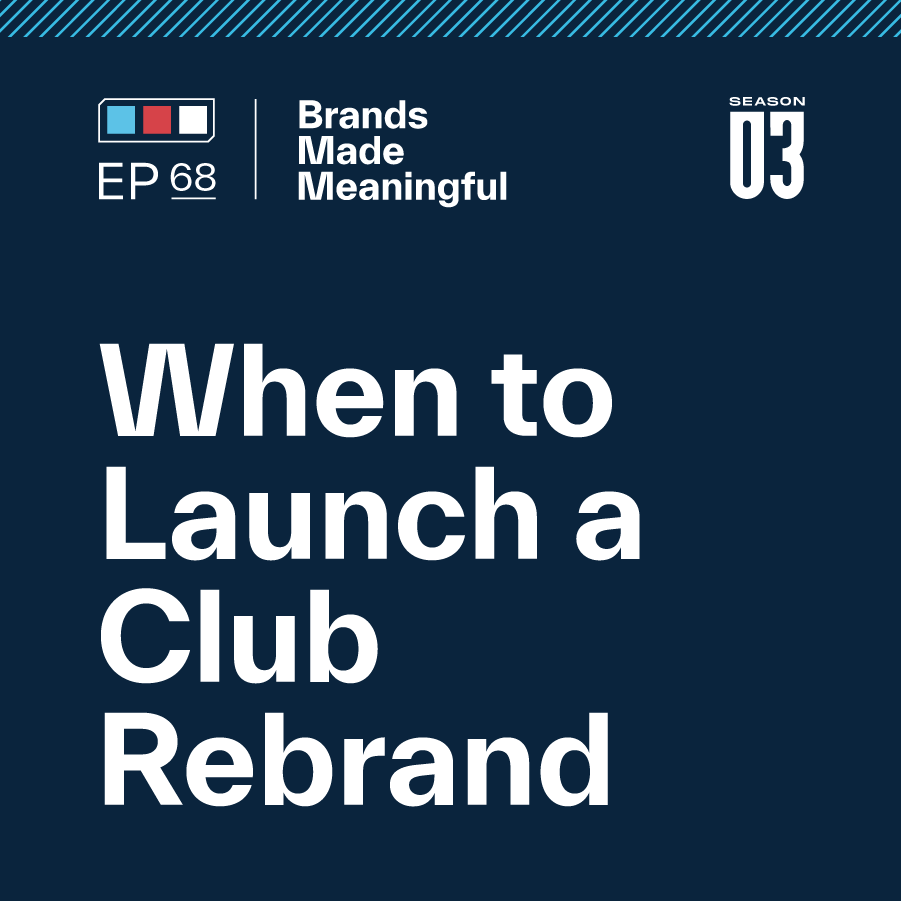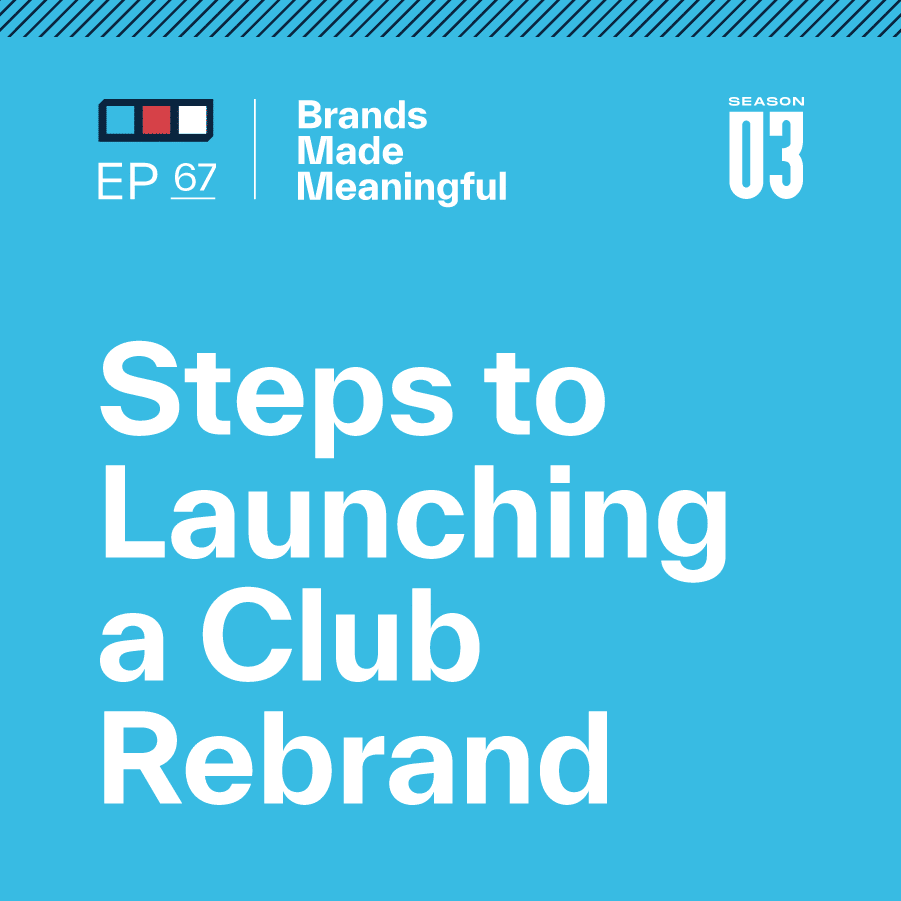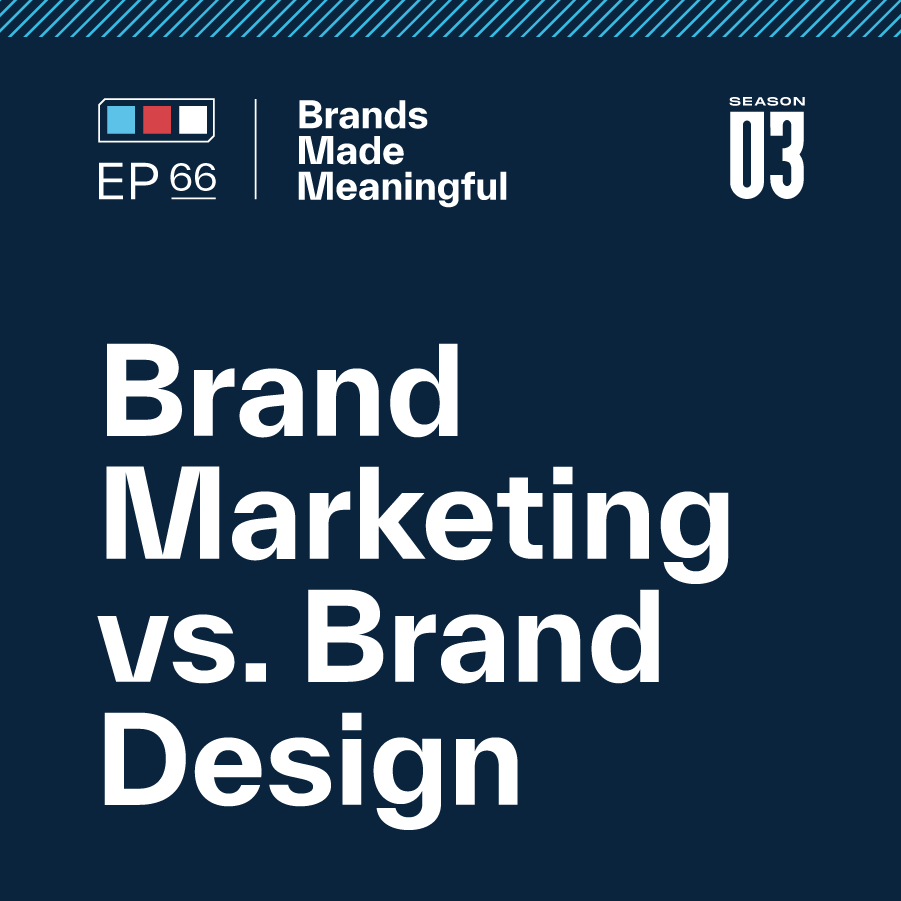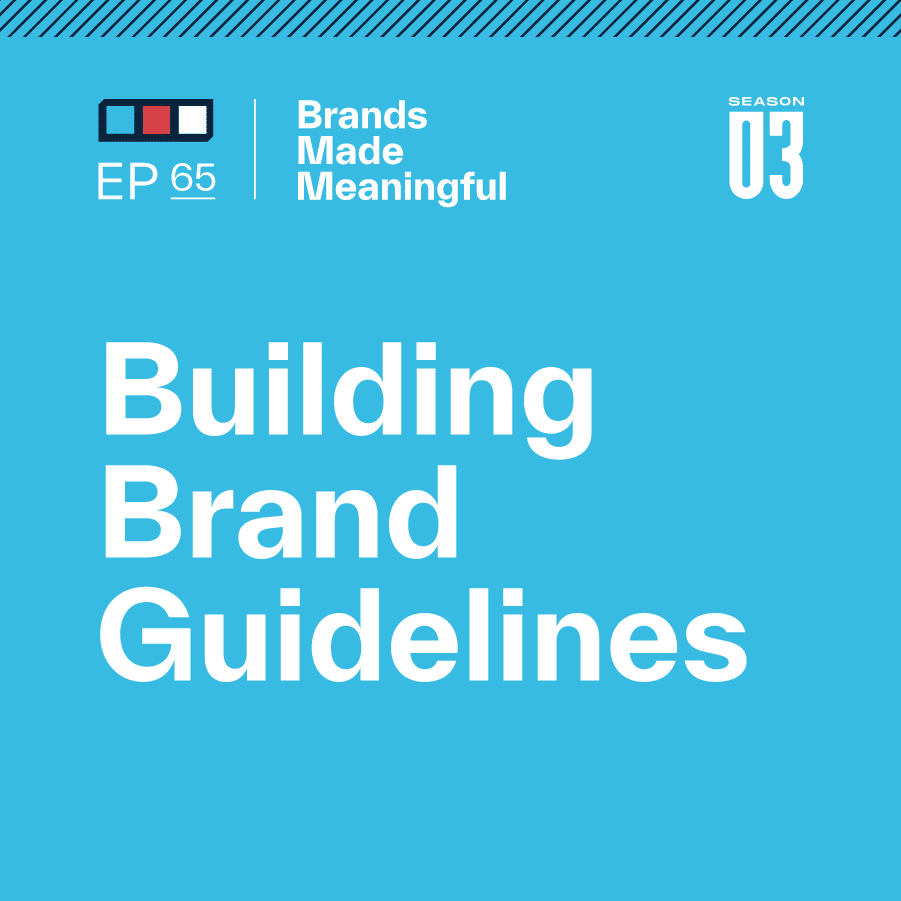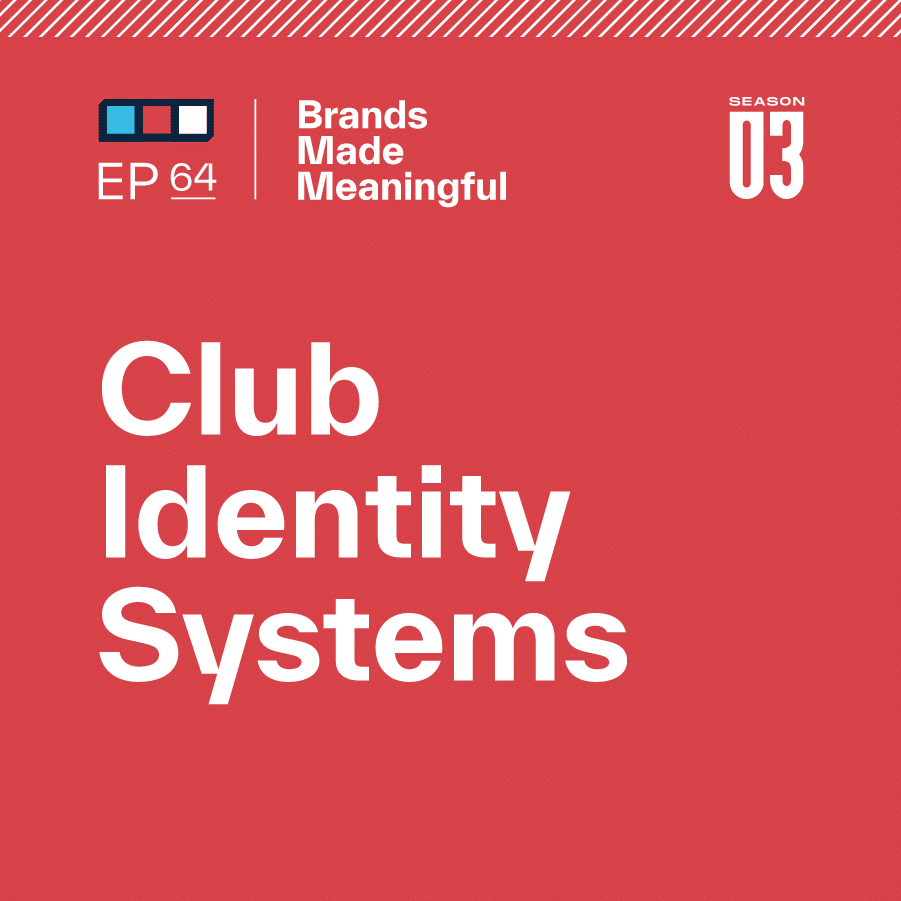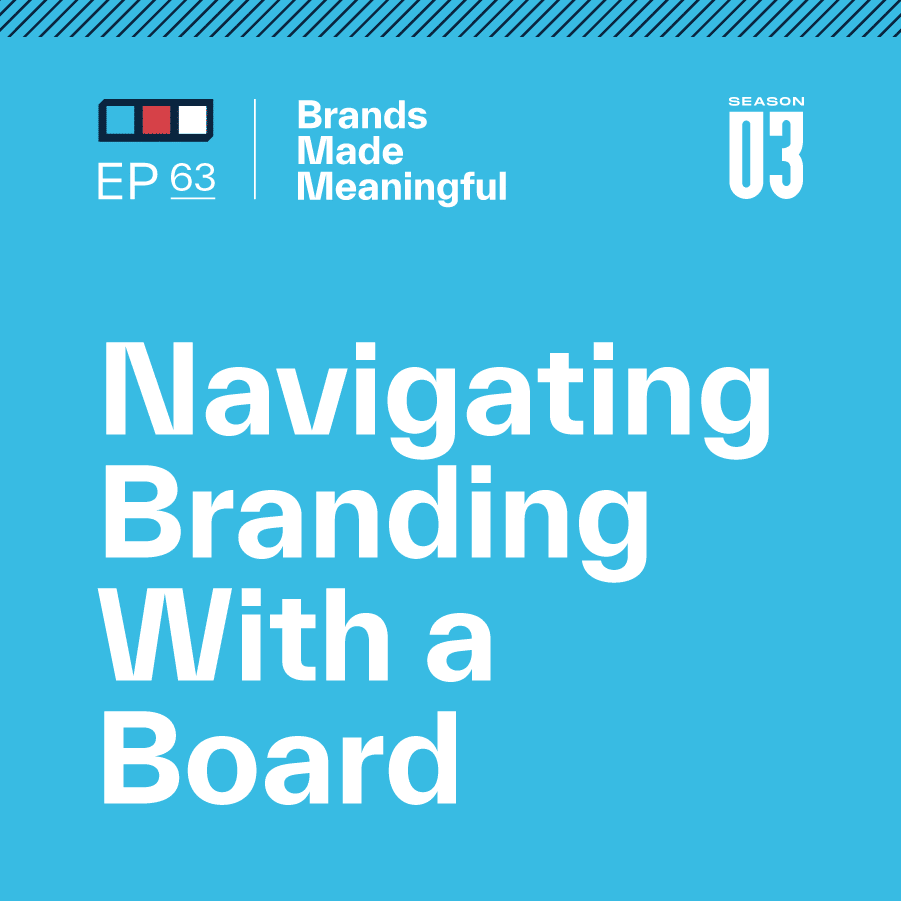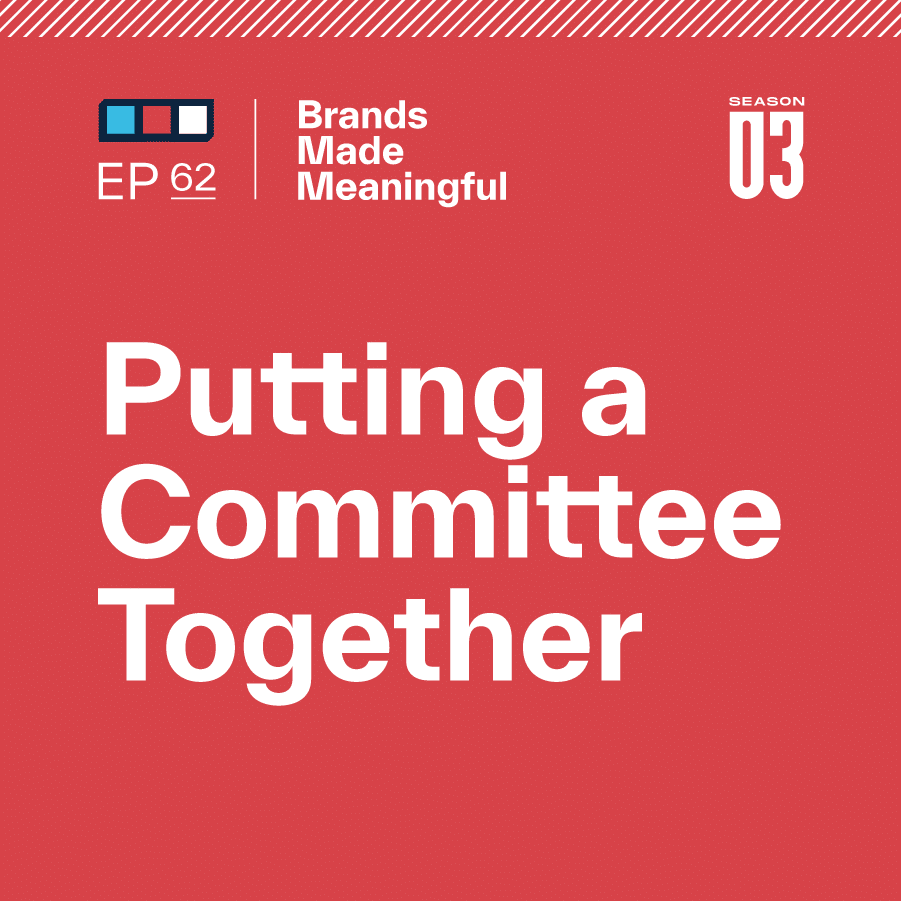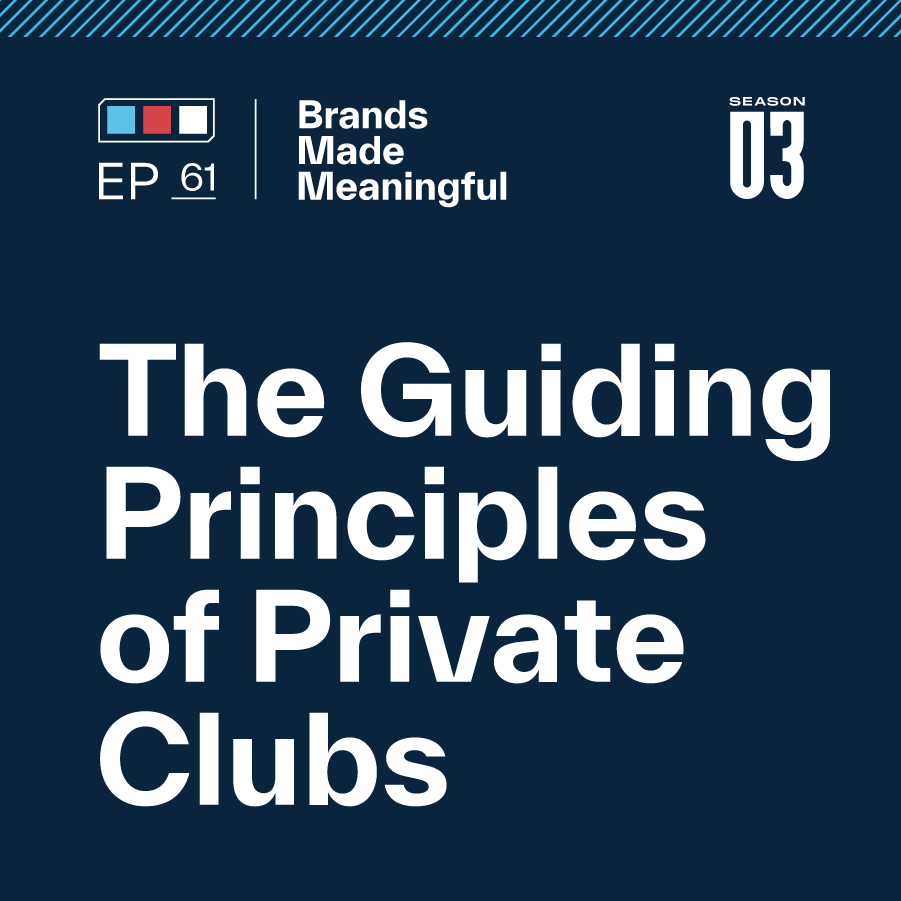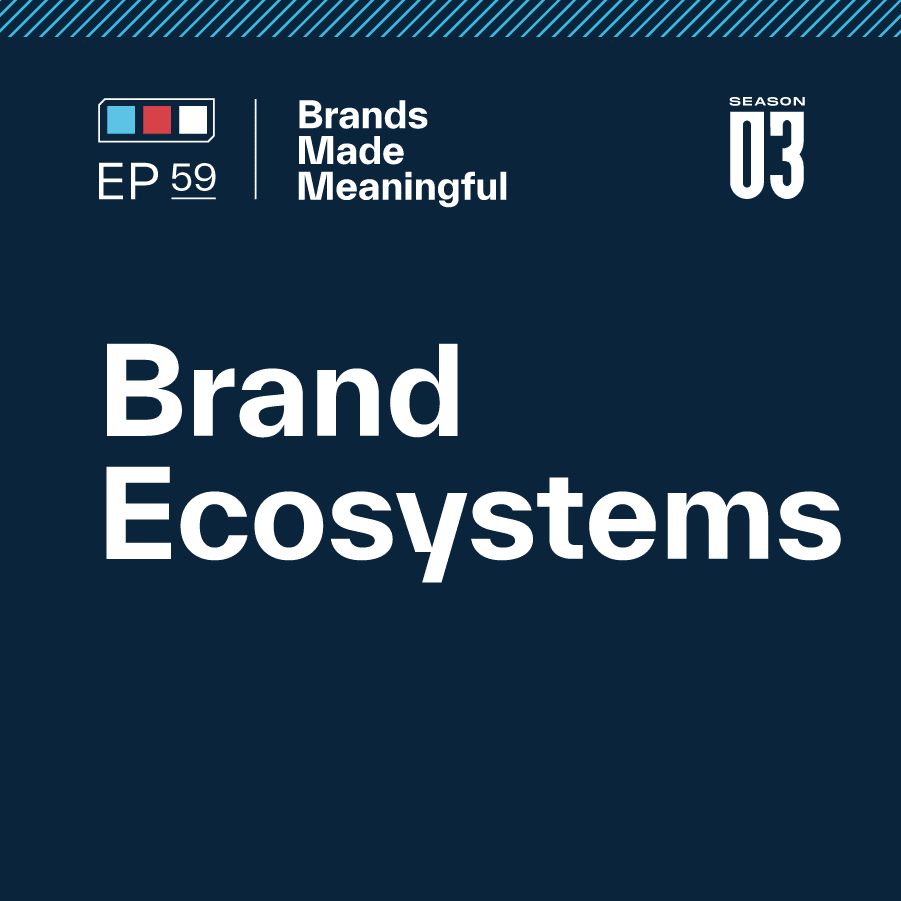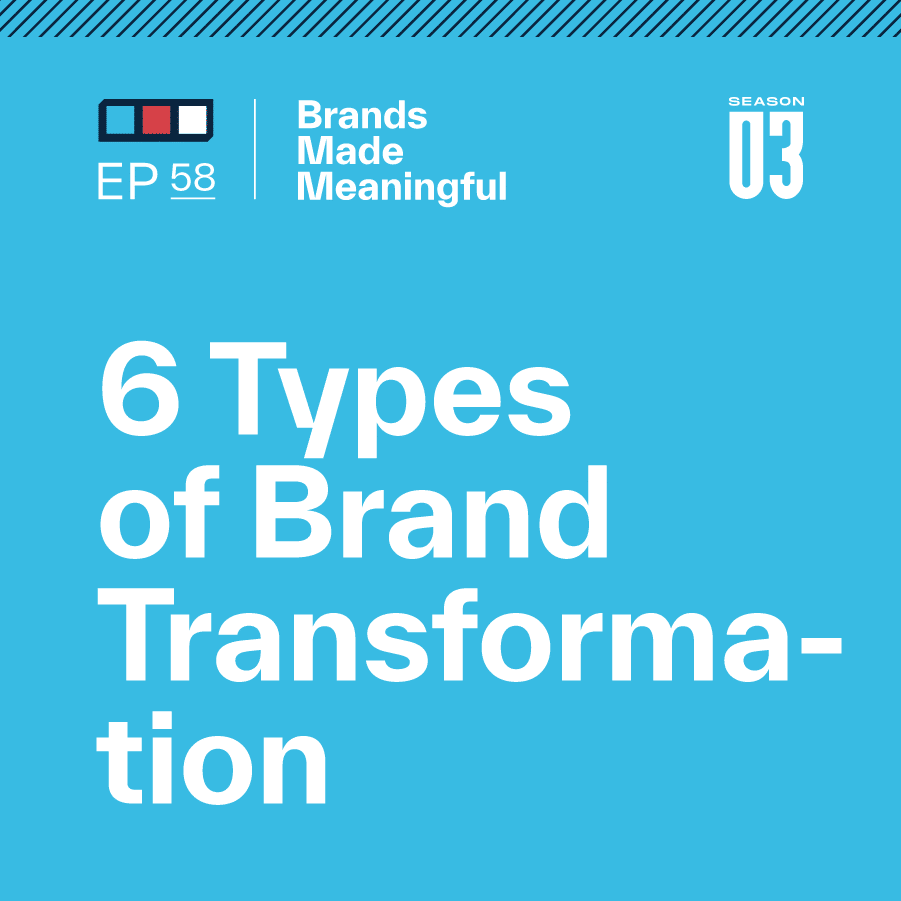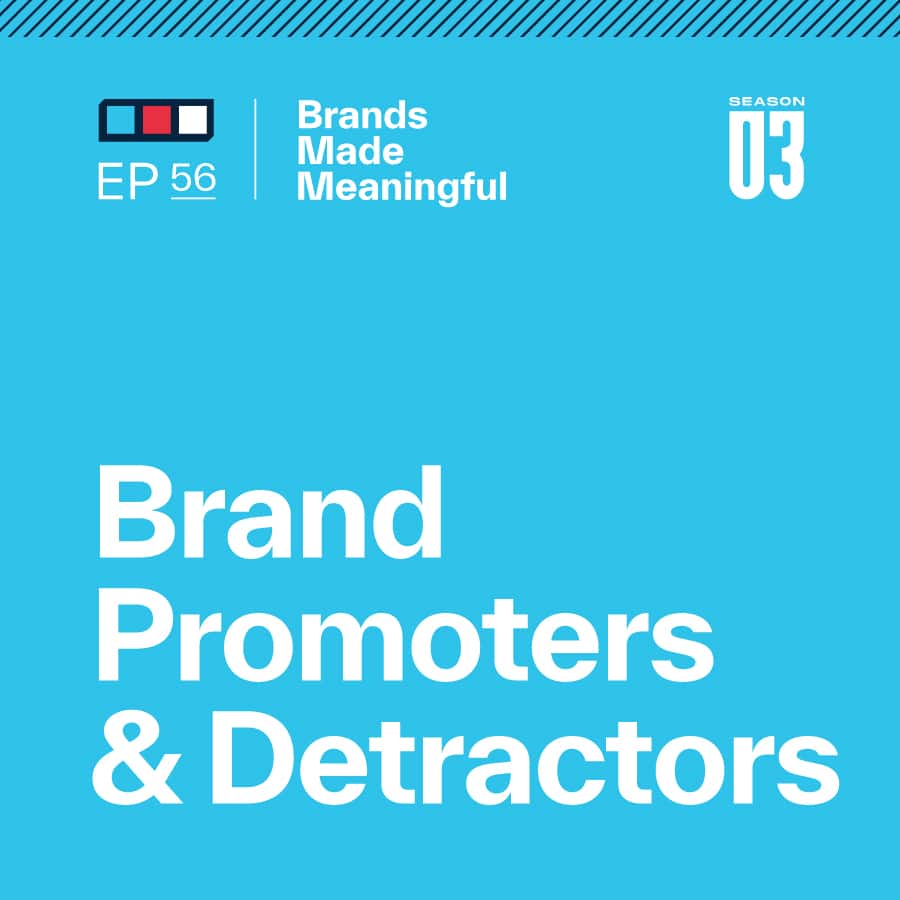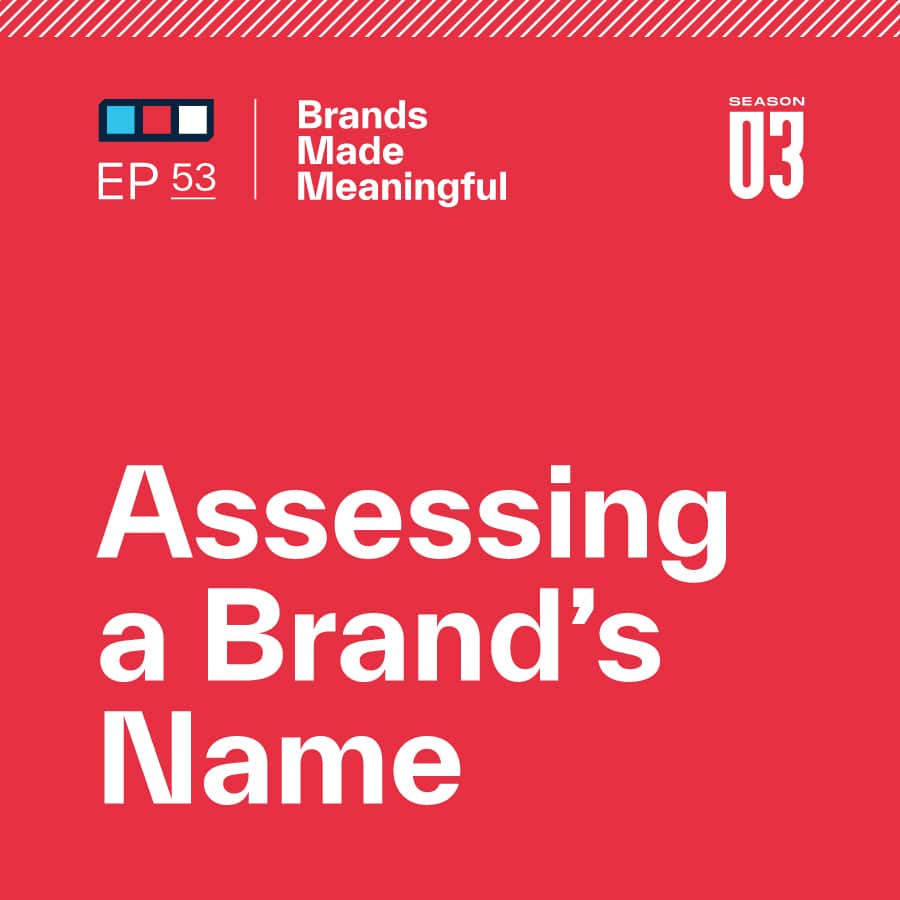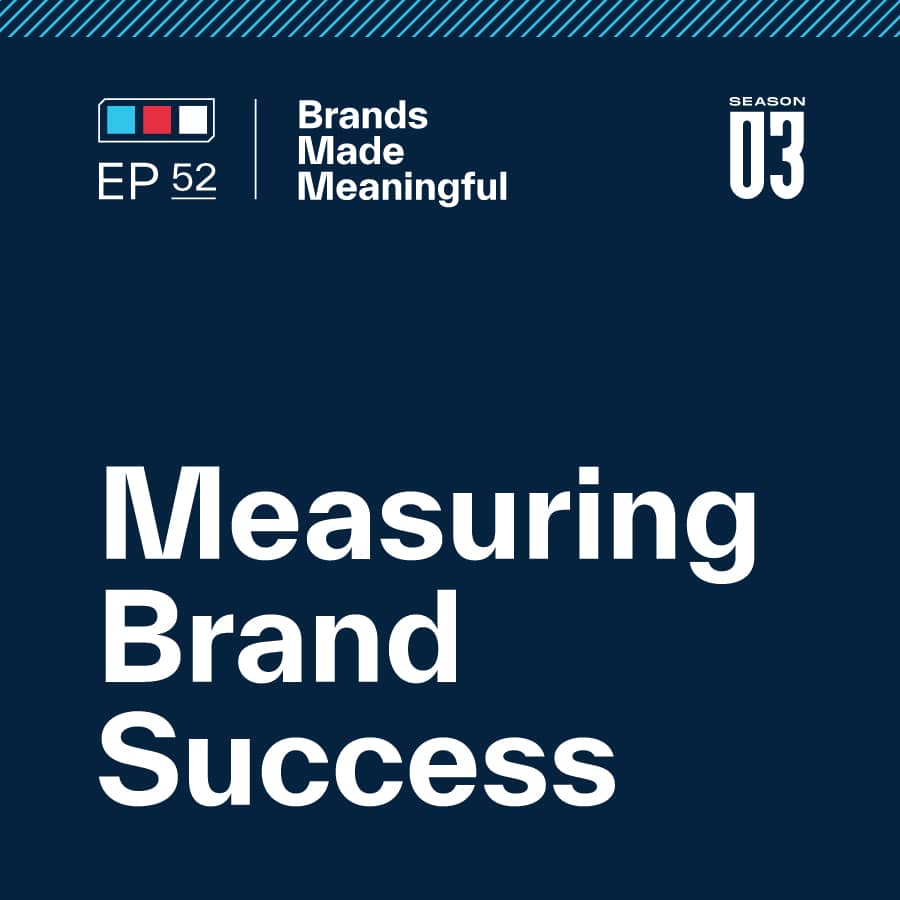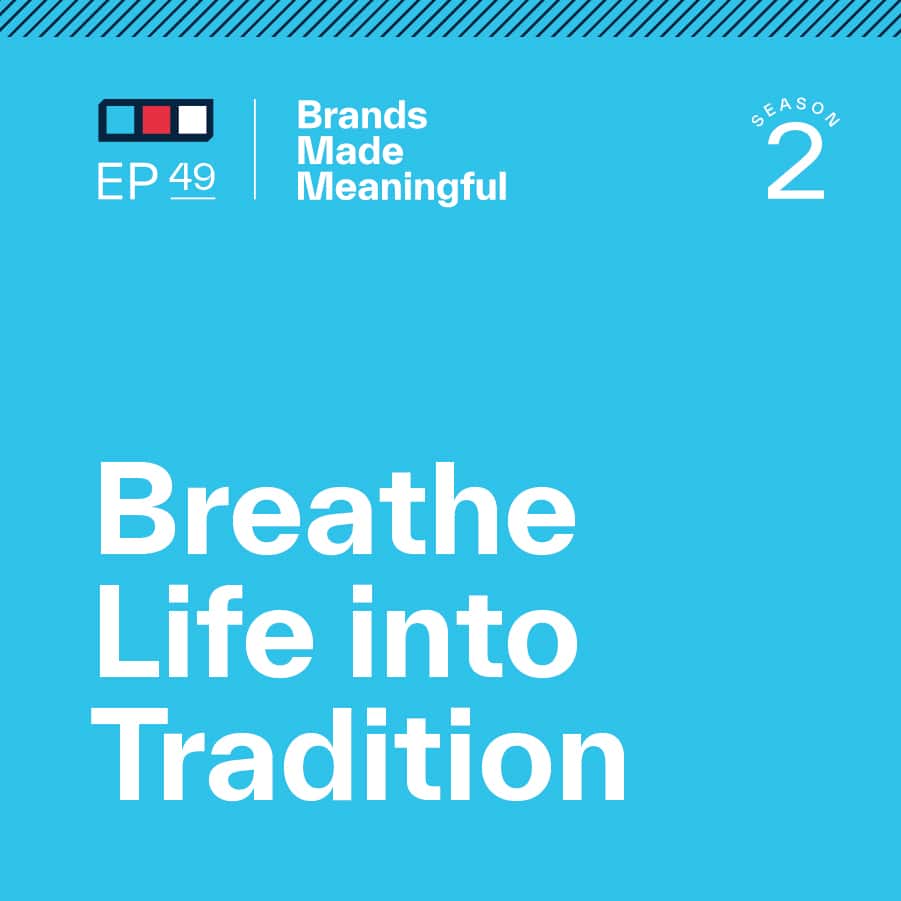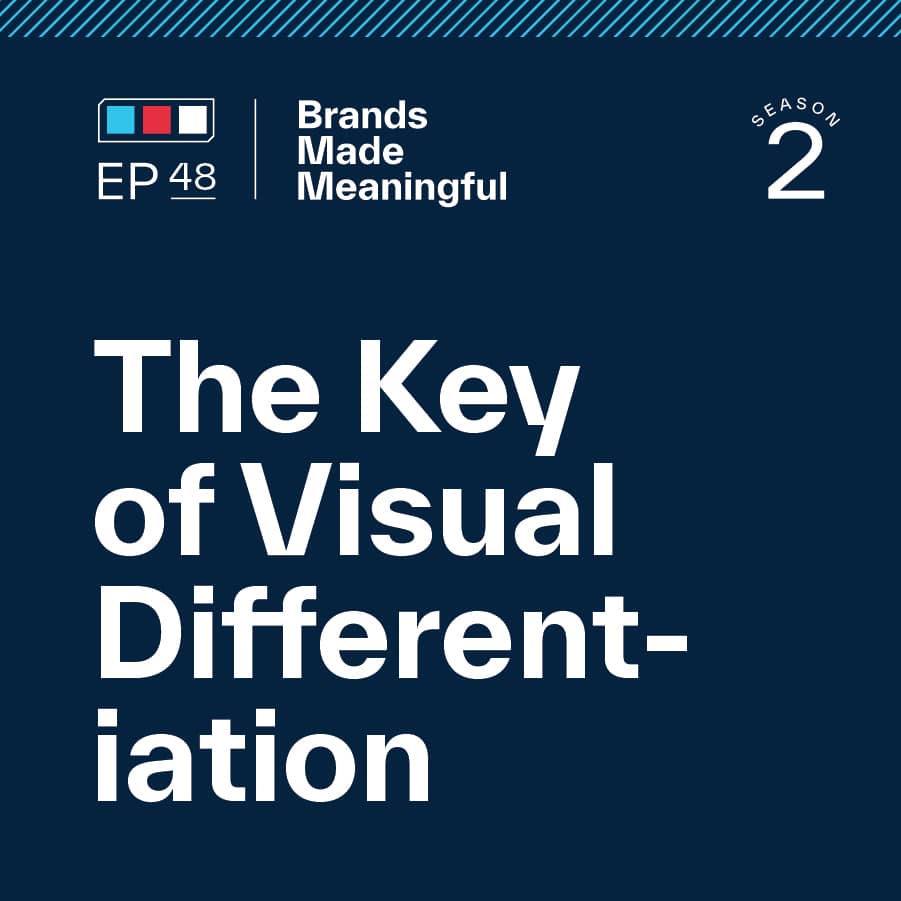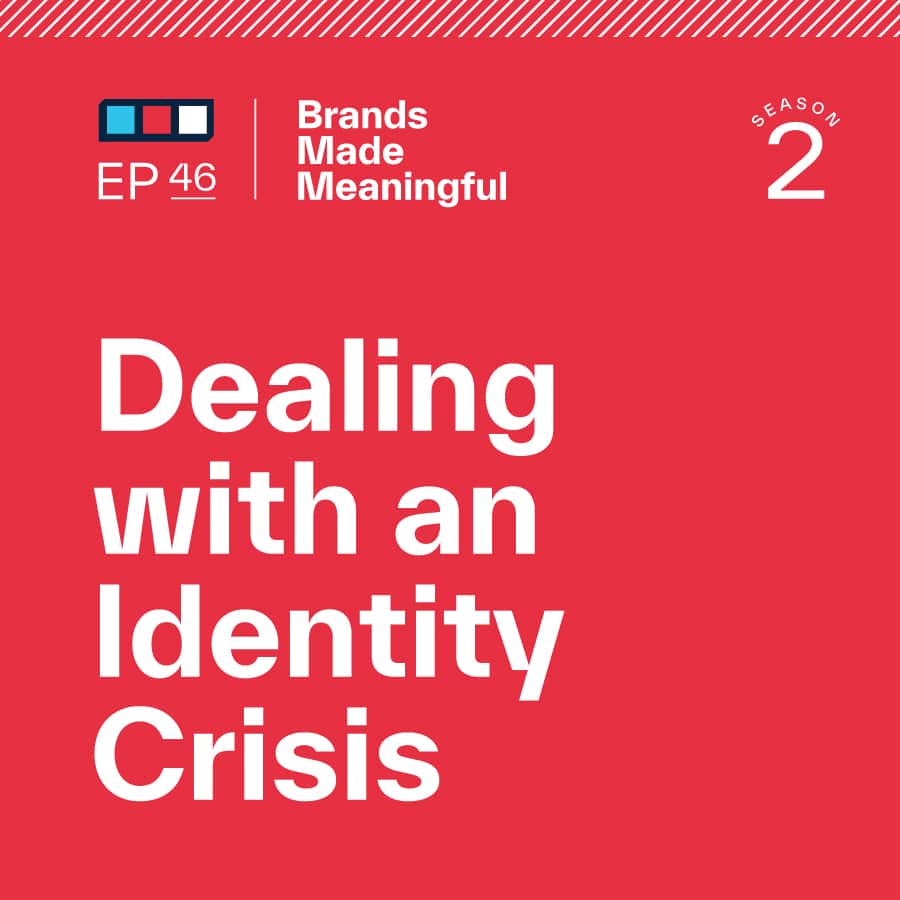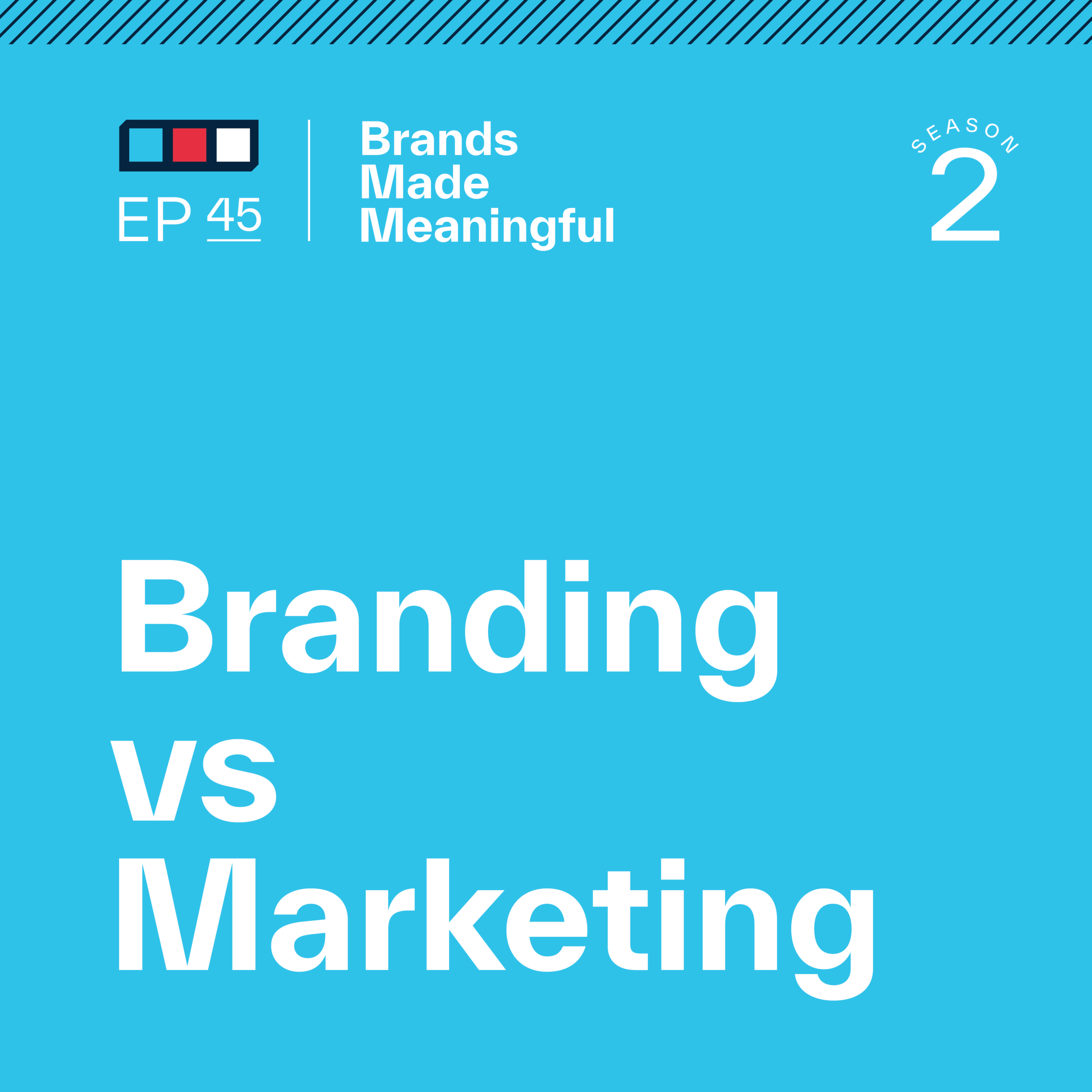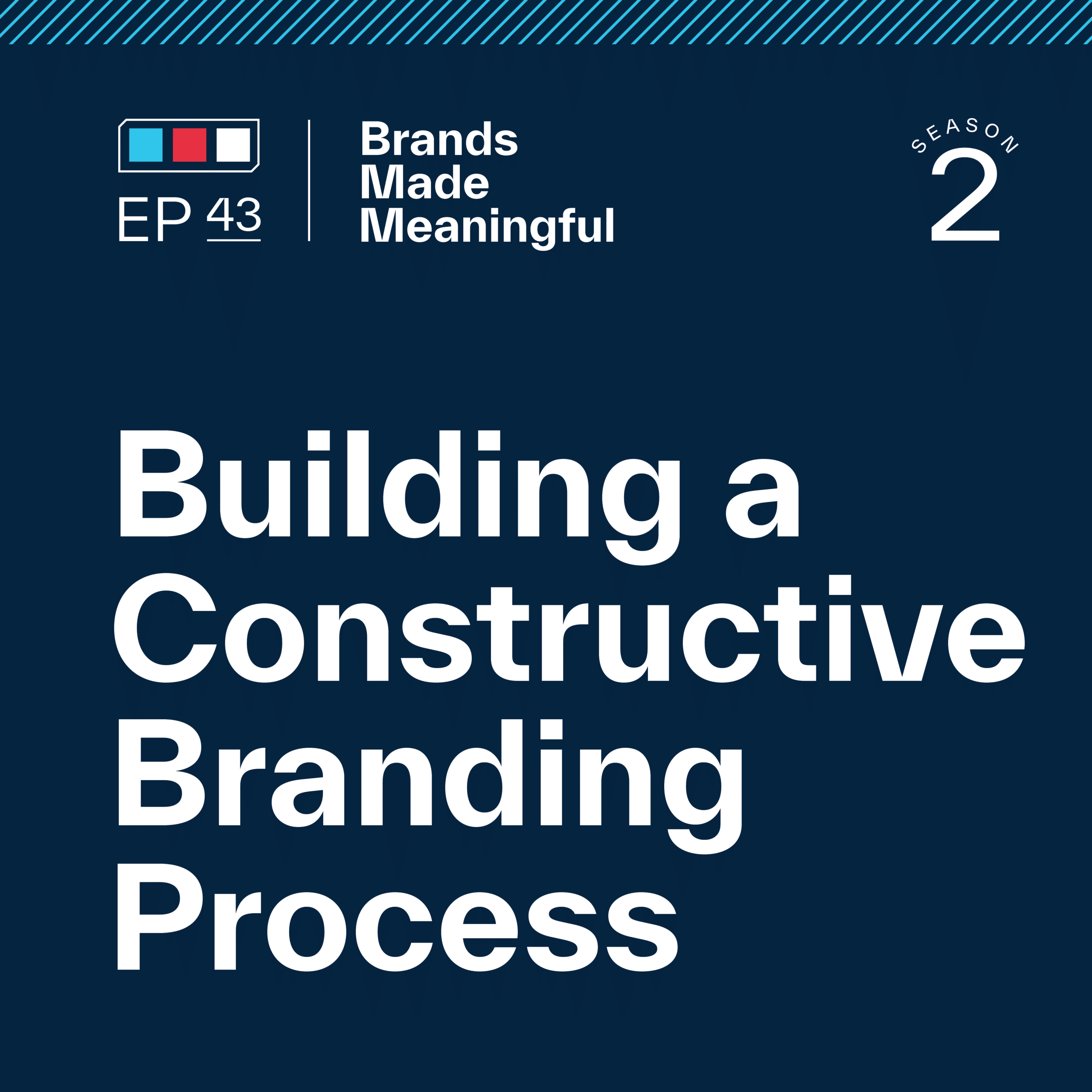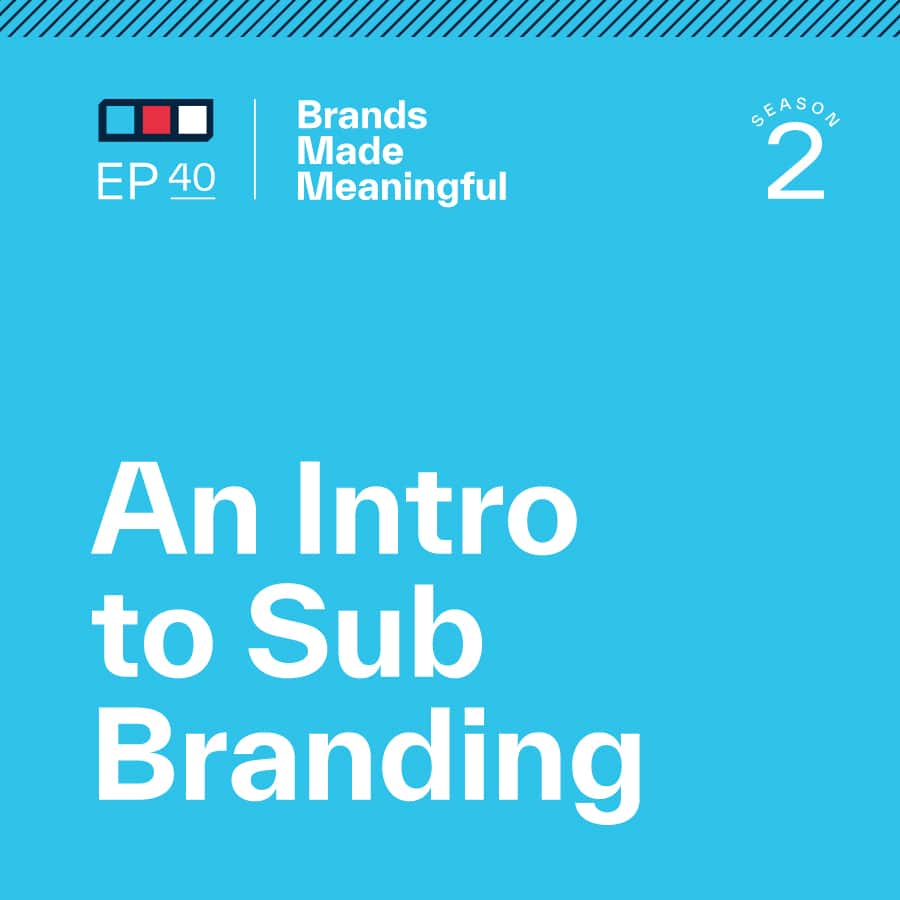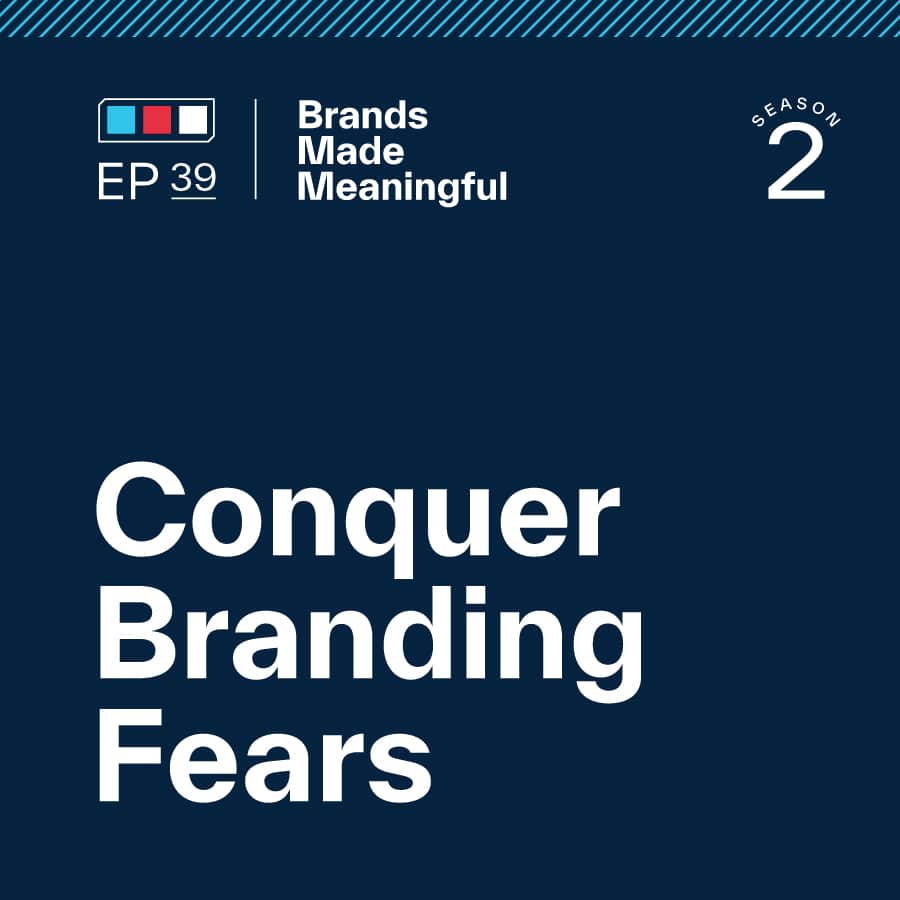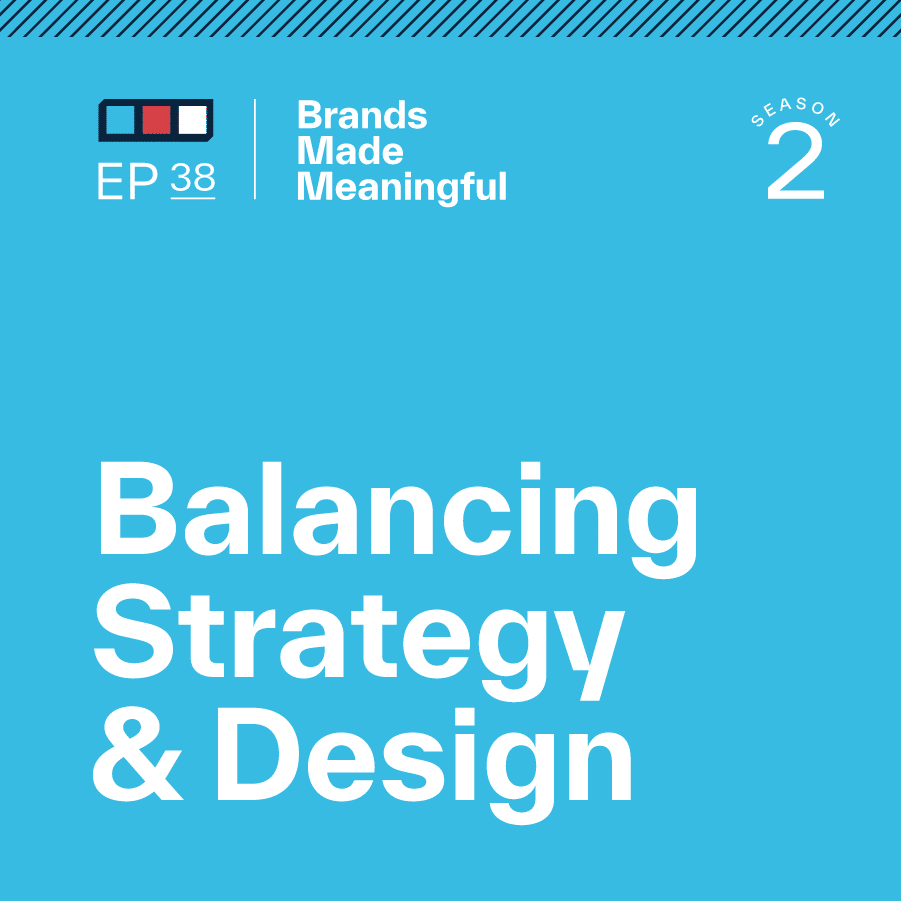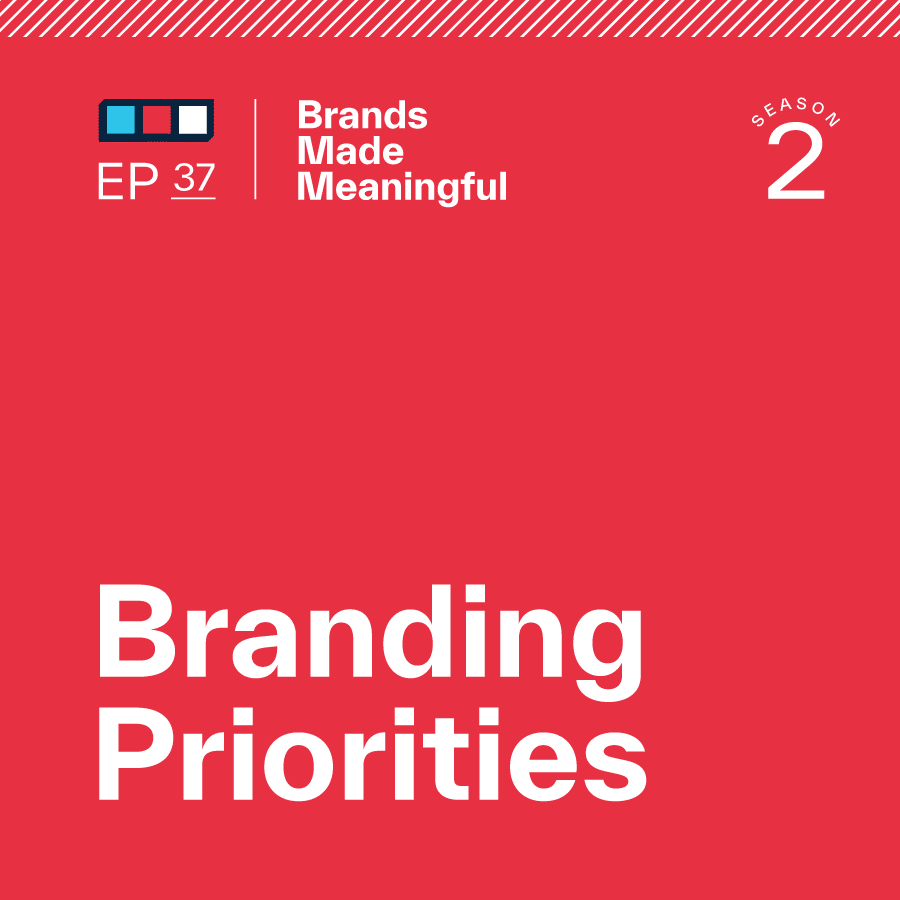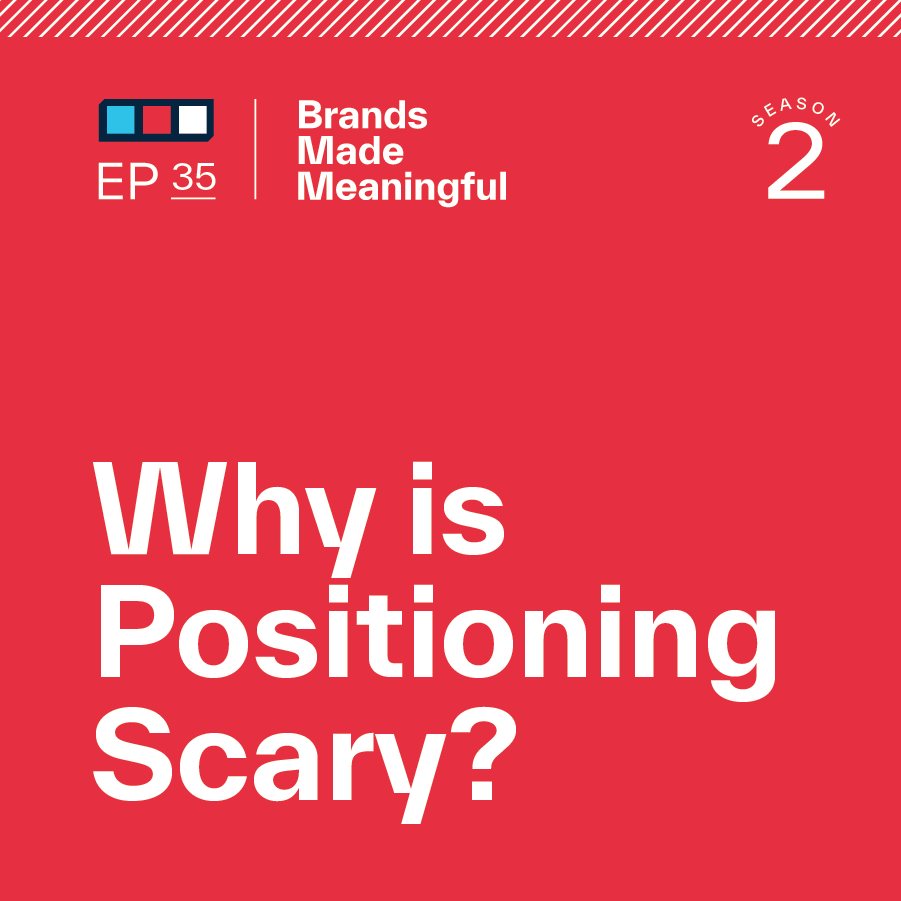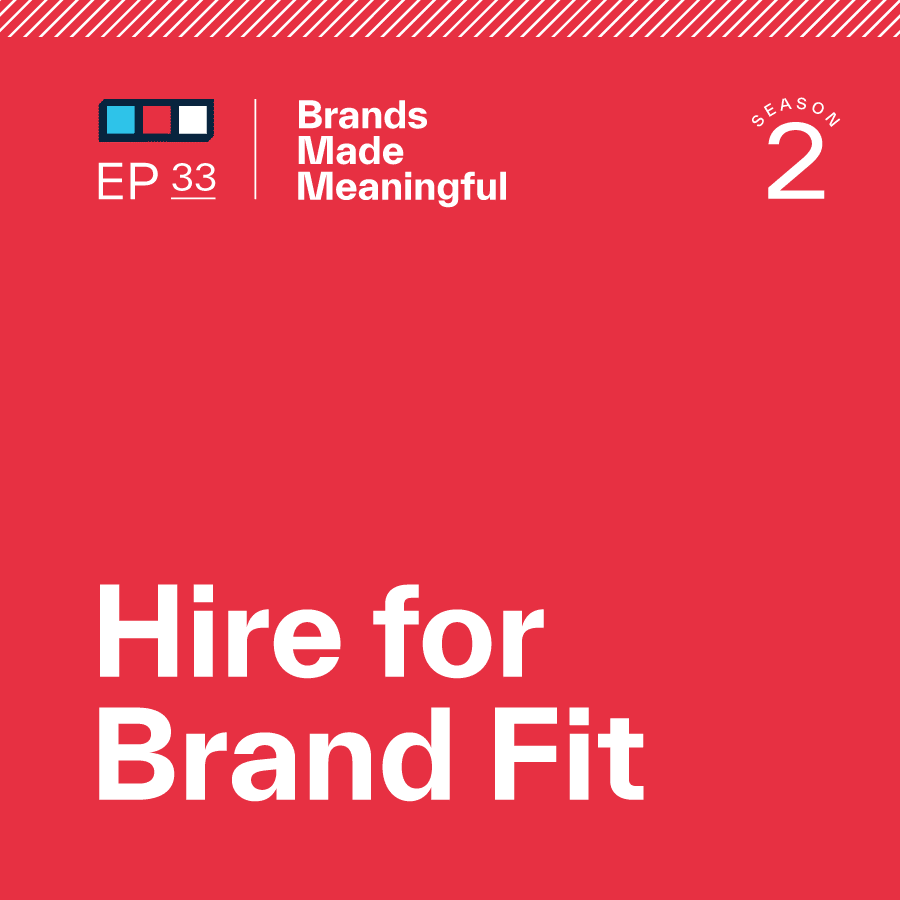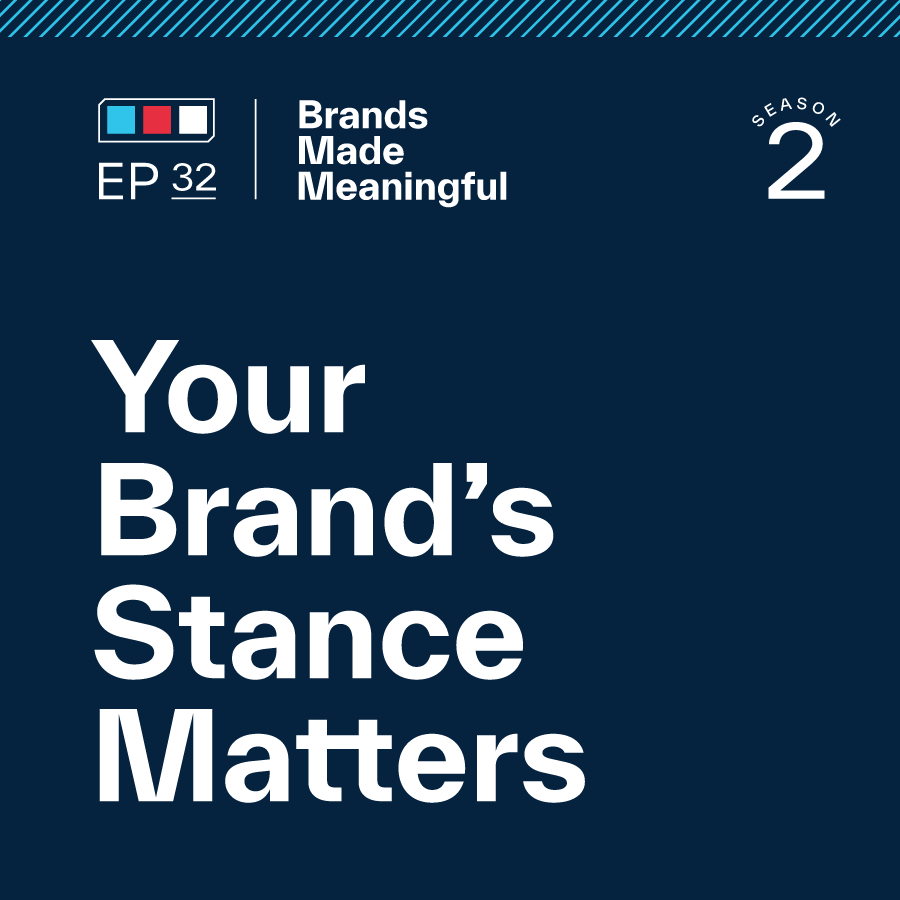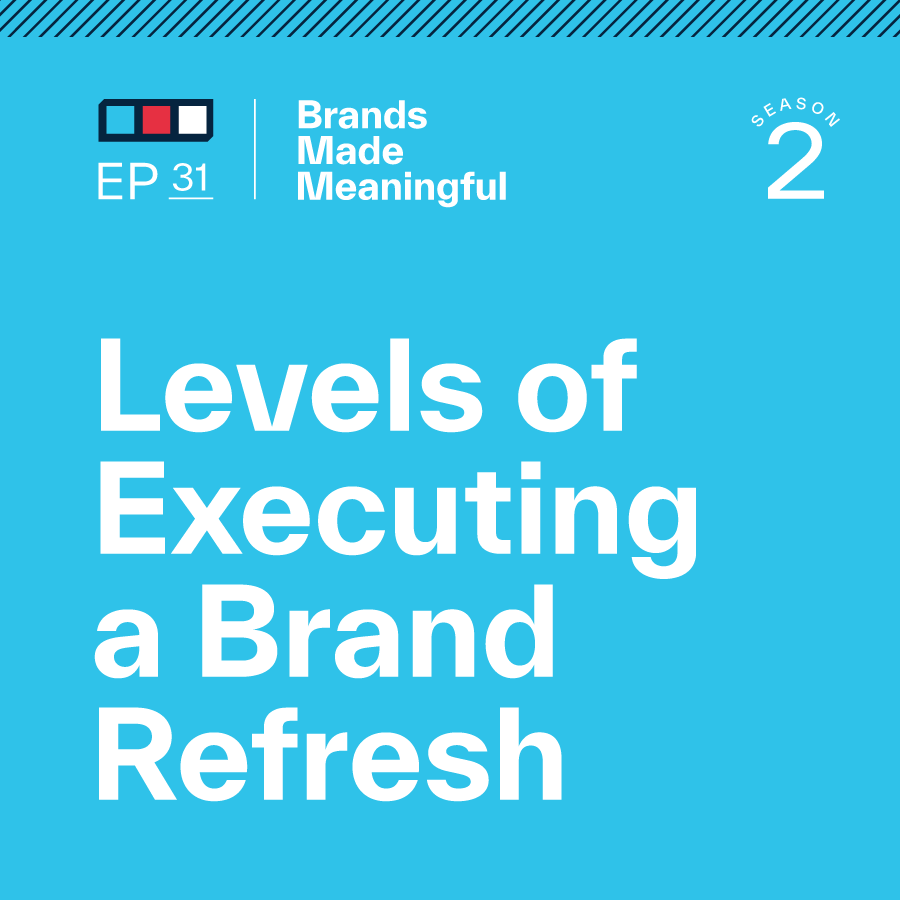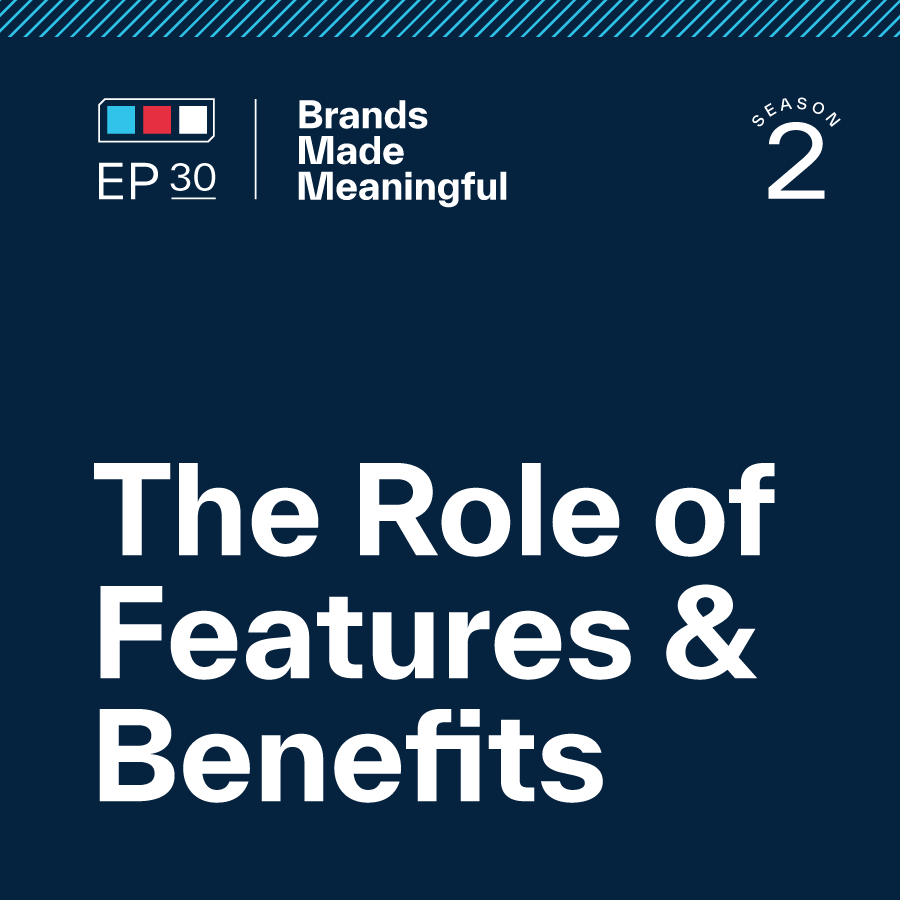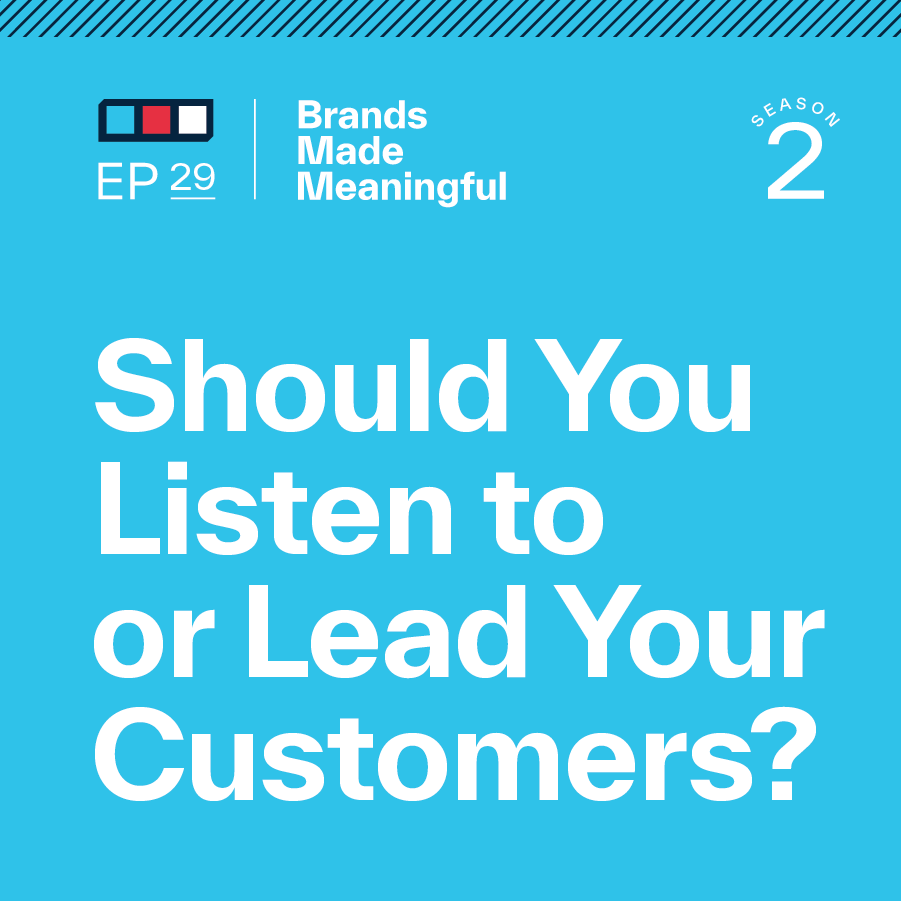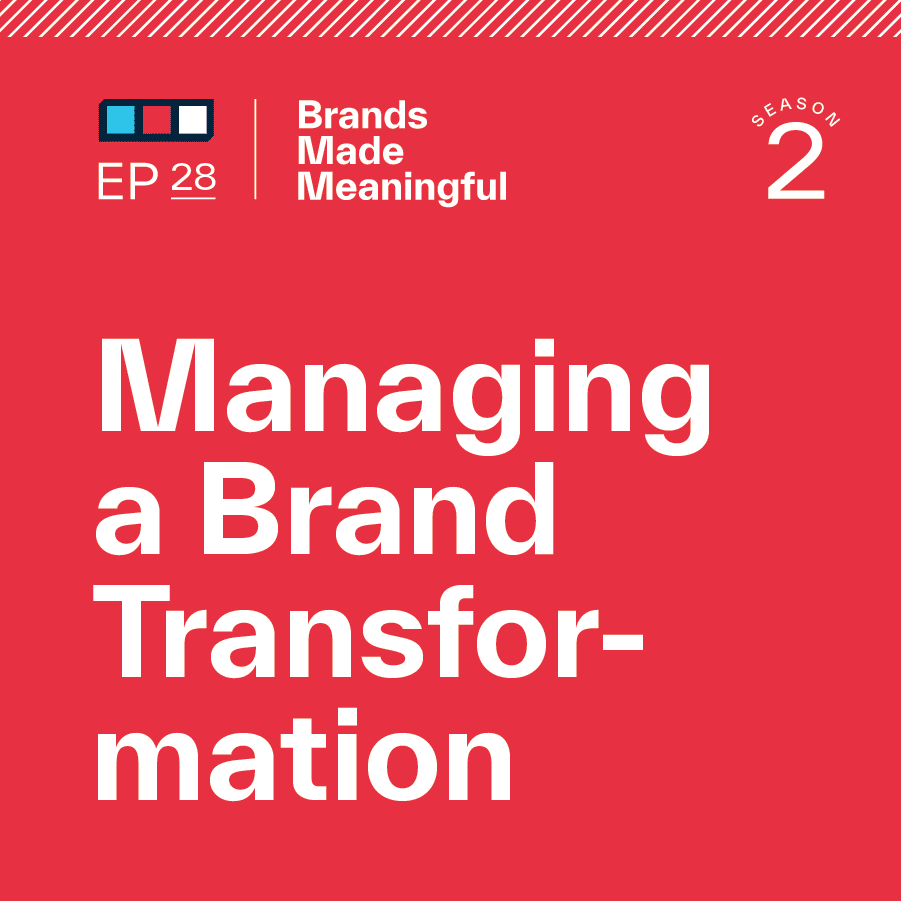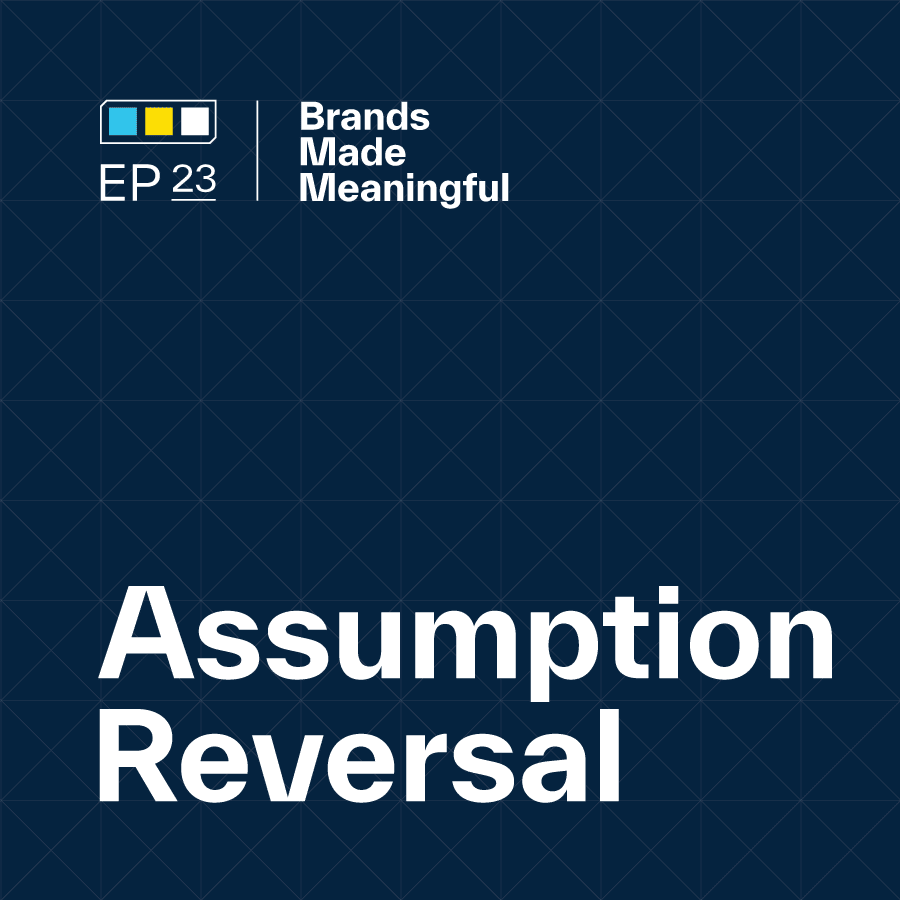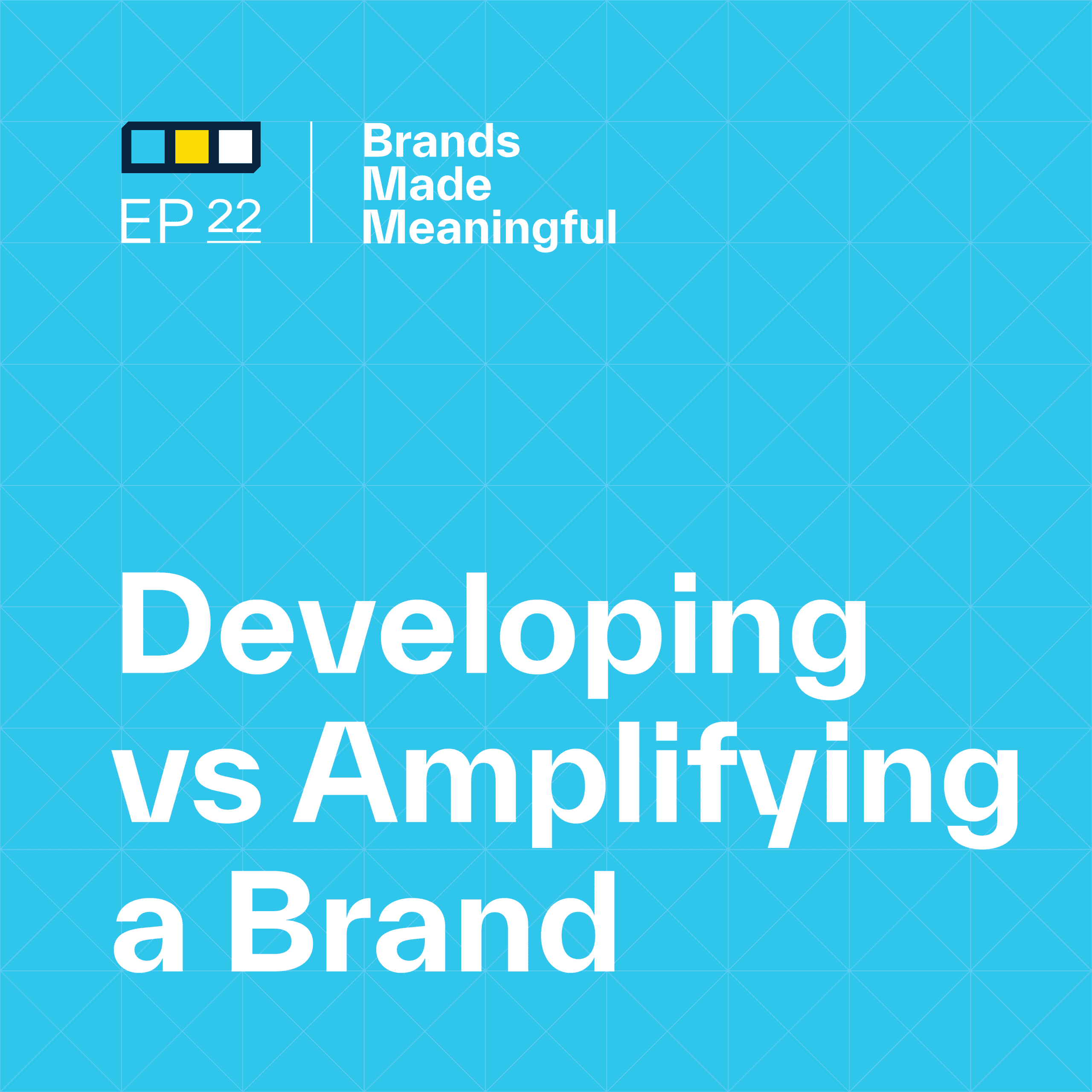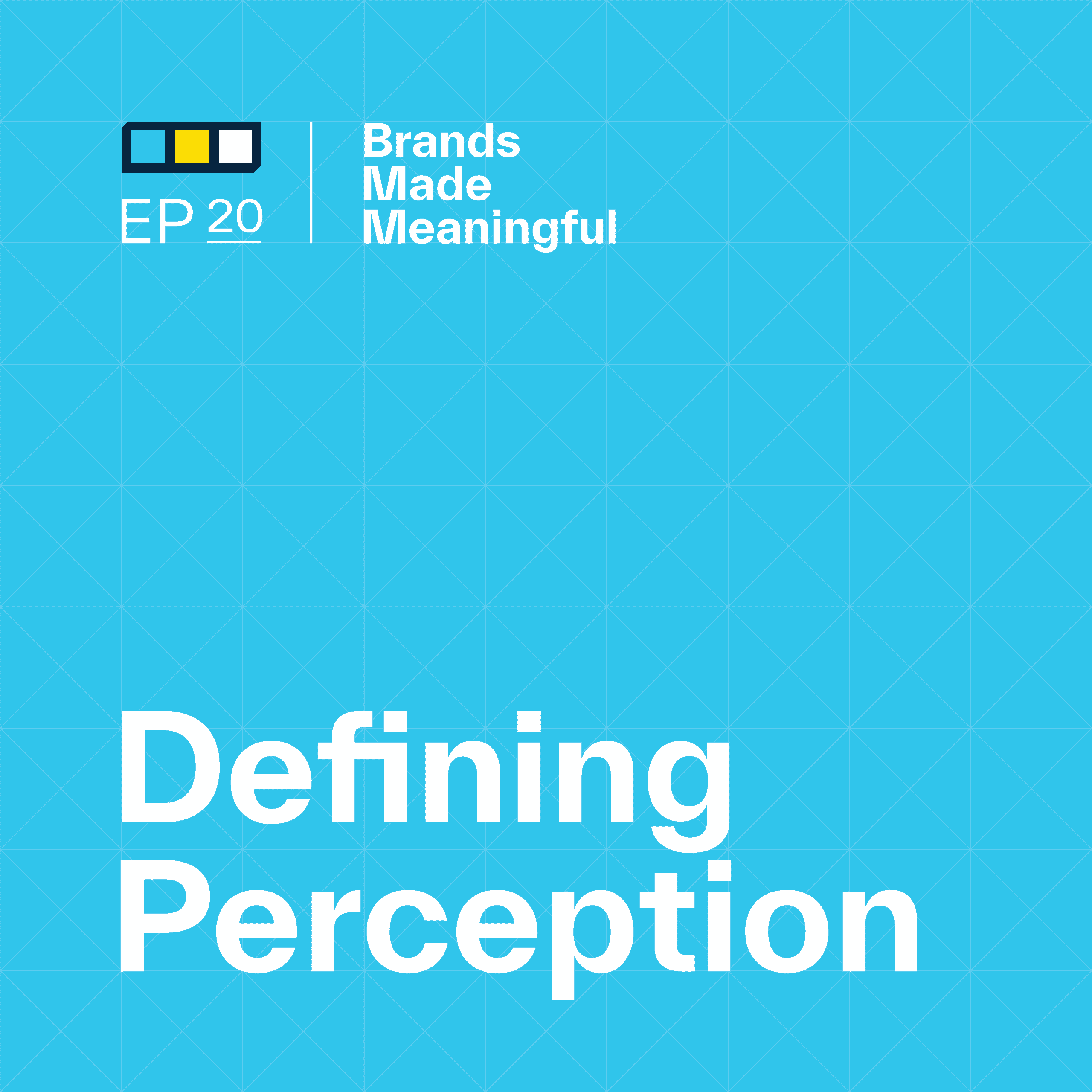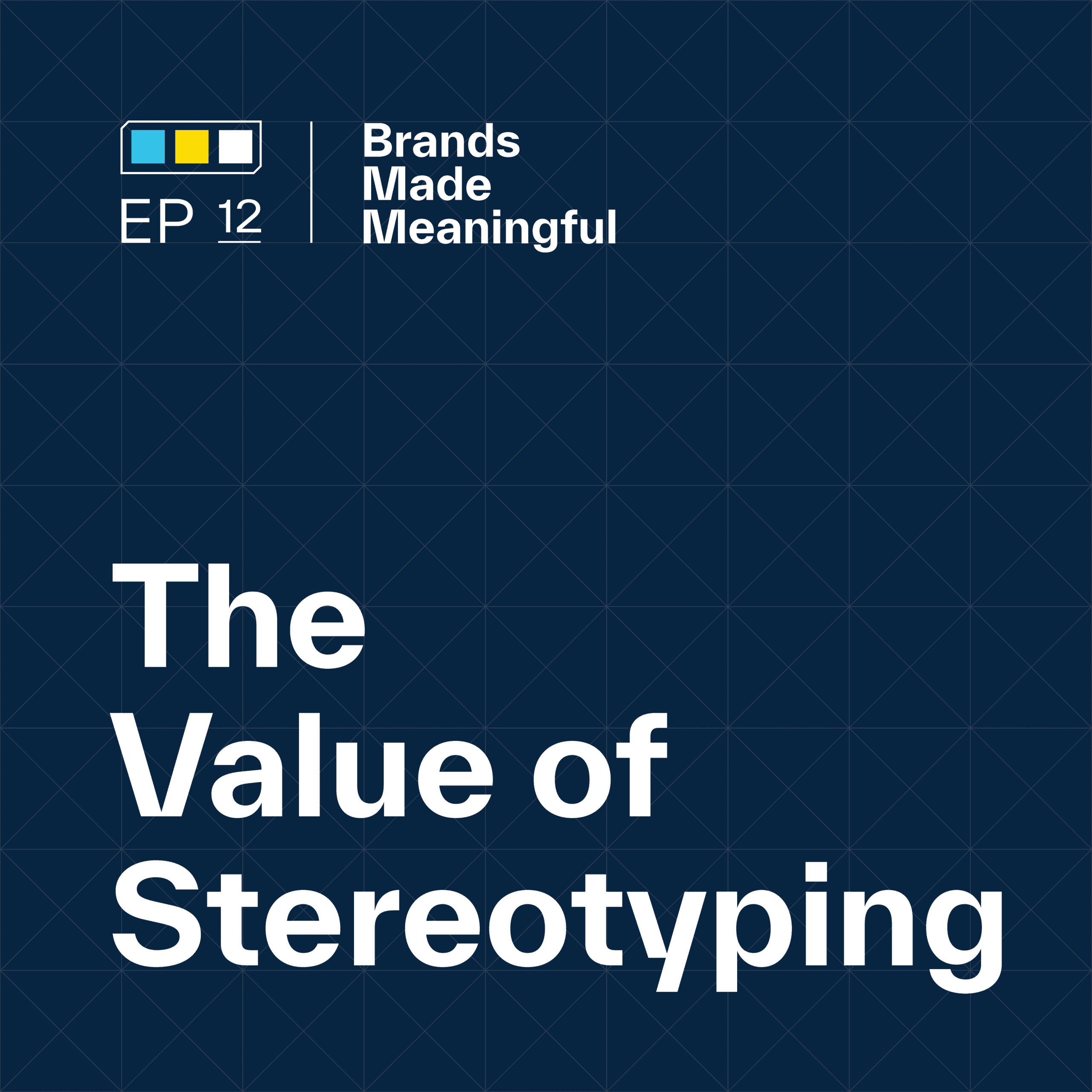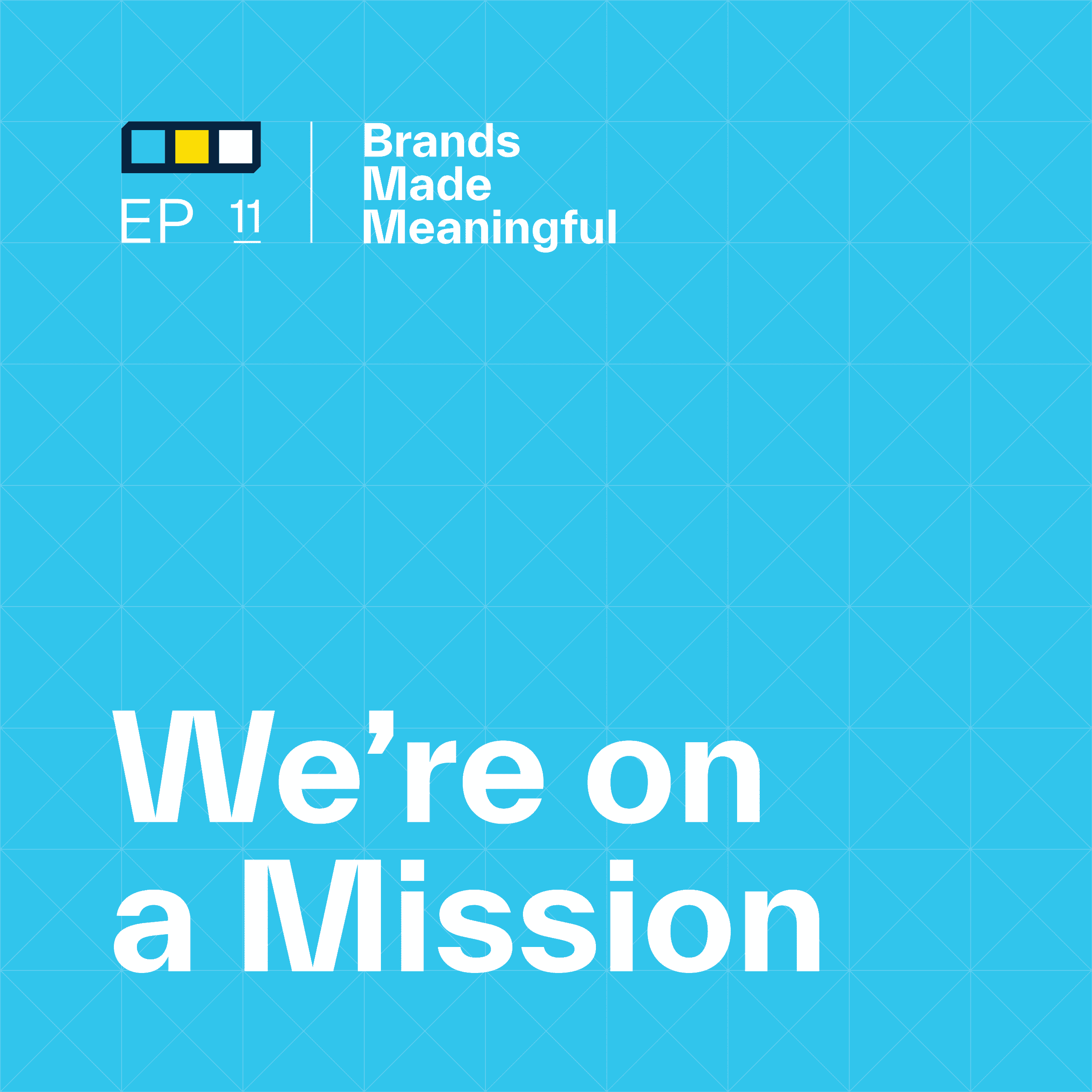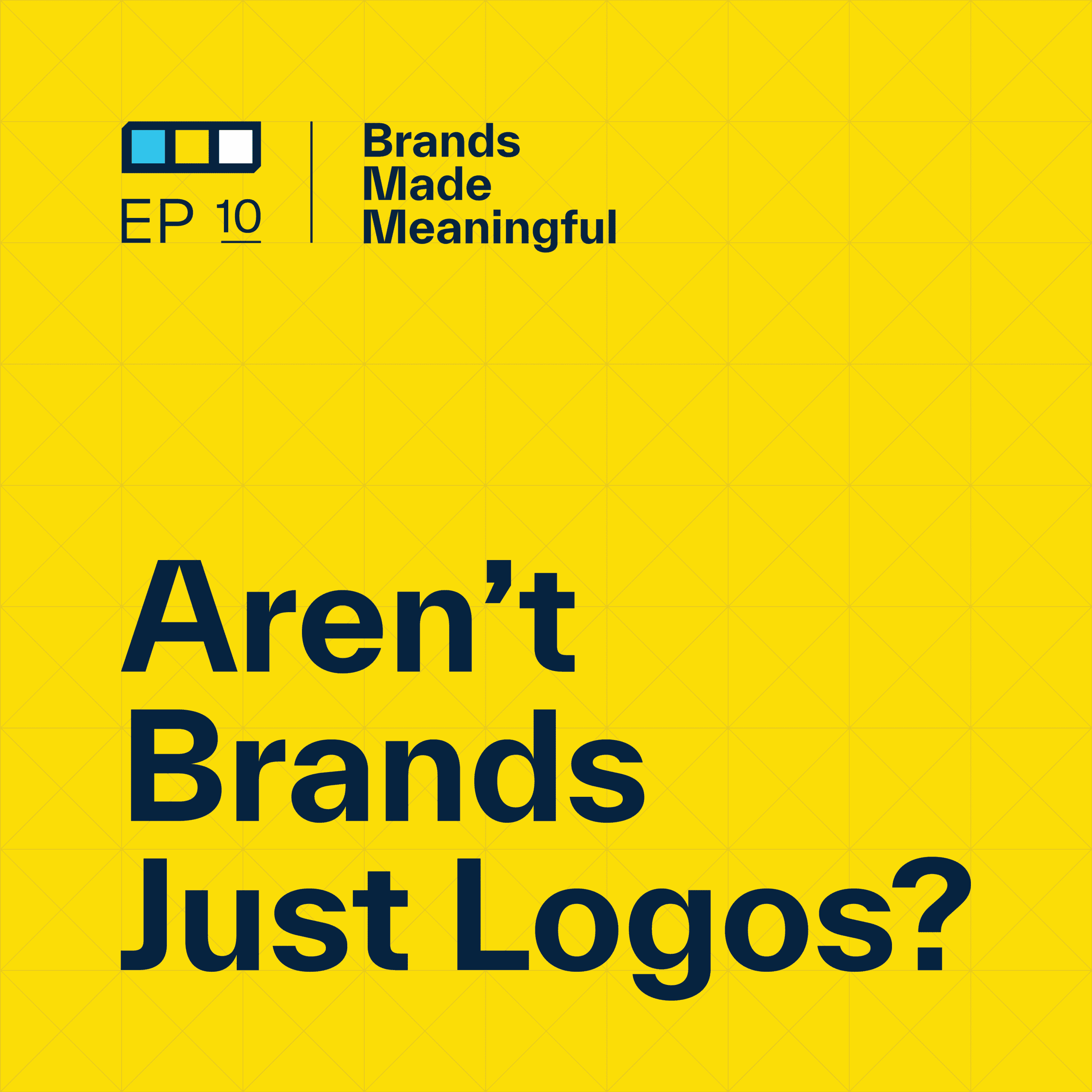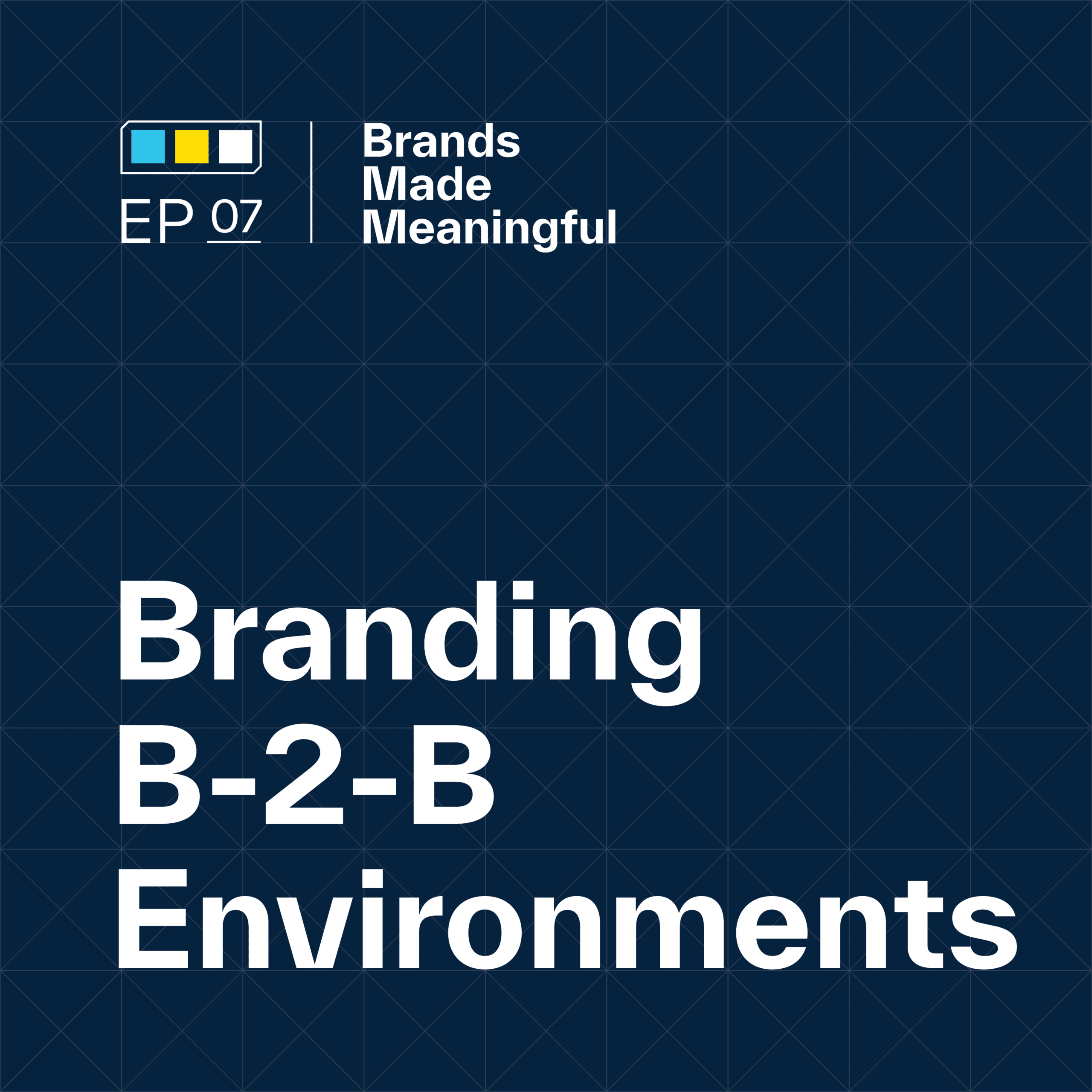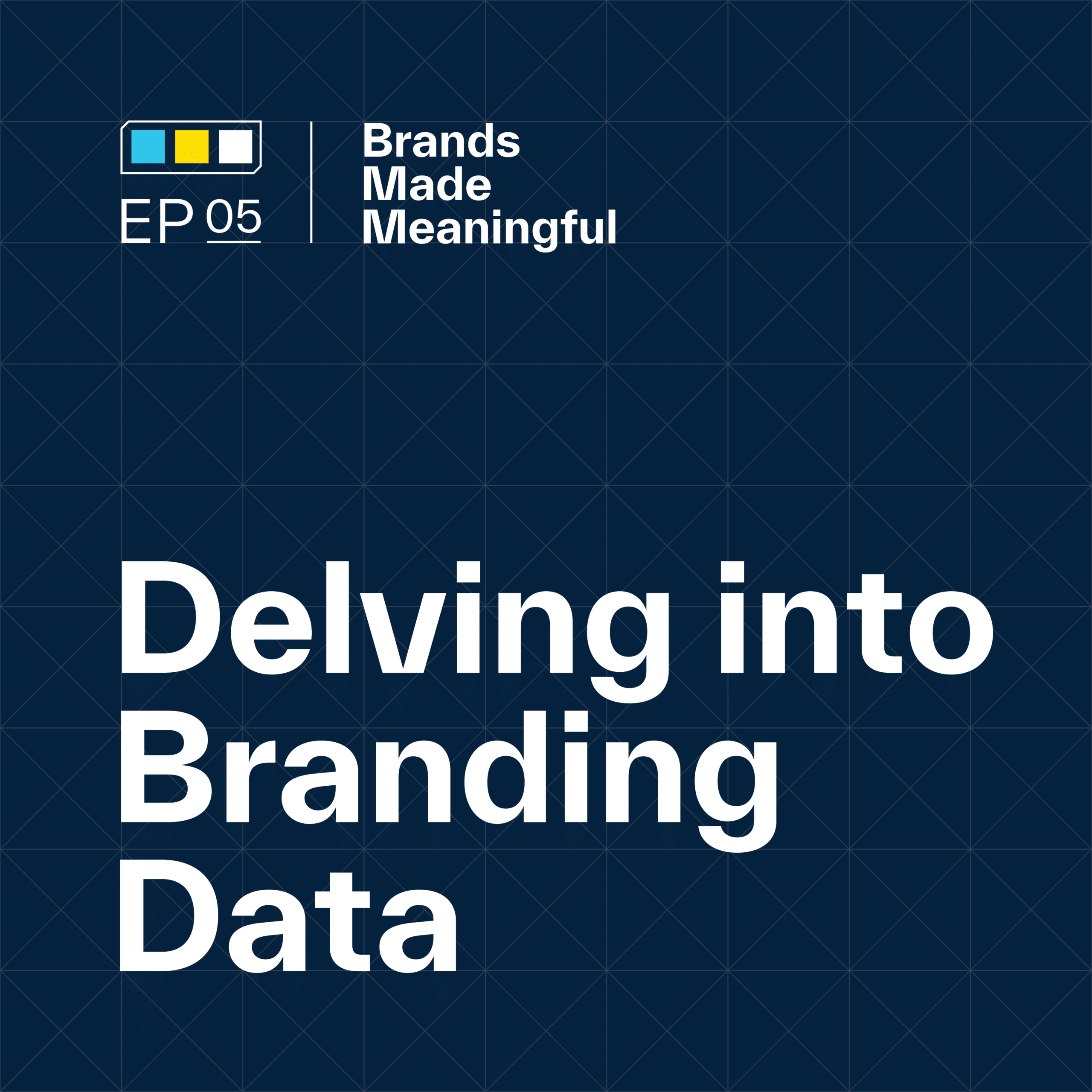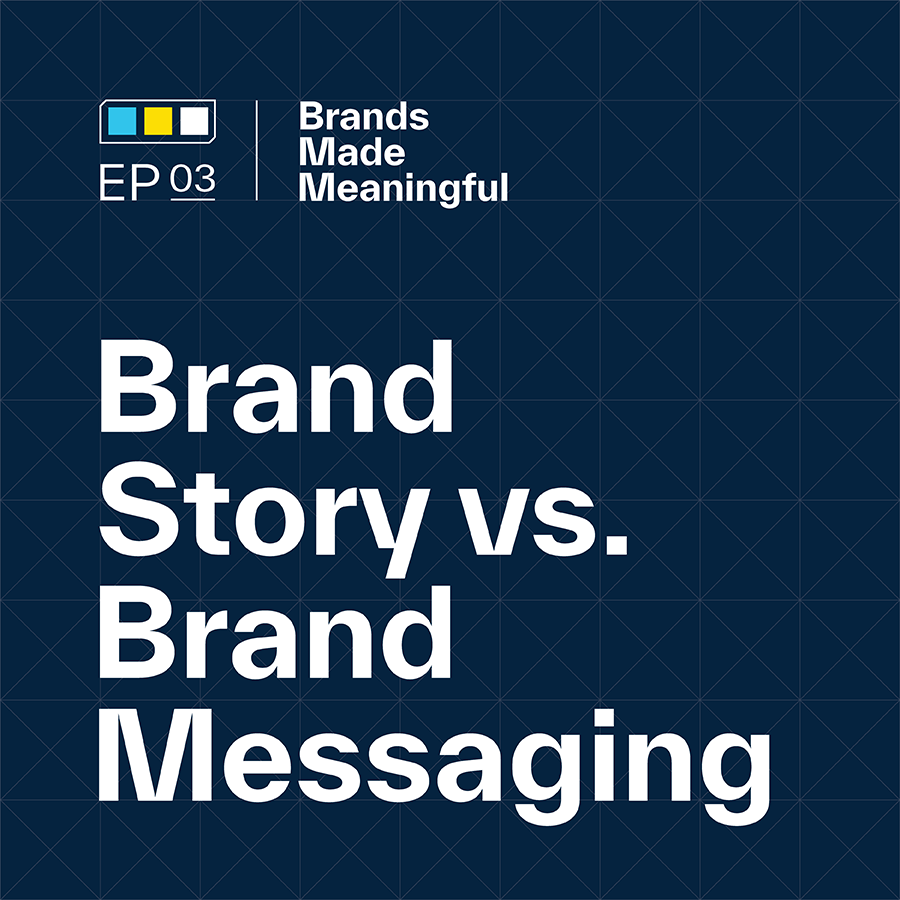EPISODE 54
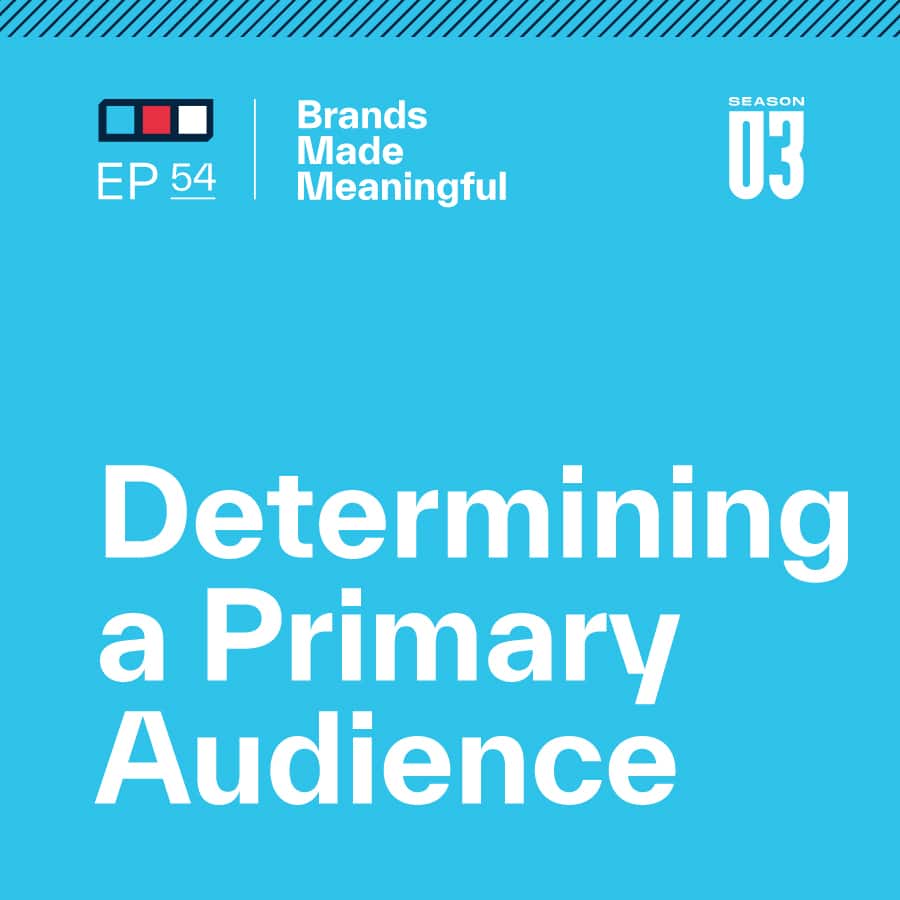
Determining A Primary Audience
Episode 54
Derek and Tucker discuss if and when you should be honing in on your audience vs. casting as wide a net as possible.
EPISODE TRANSCRIPTION
Today we’re talking about focusing on one audience or trying to determine who we should focus on when we have a lot of options at our disposal.
Derek It’s all about determining who we’re for.
Expand Full Transcript
Derek Who’s our customer?
Tucker It’s a good way of looking at that, and I think that a lot of our clients will say we have a lot of customers, like we serve a lot of people, we do a lot of things. But as a brand, when we watered down our message to meet a lot of people’s different needs and expectations, we become generic. We don’t really cut through the noise as cleanly. When you think about it.
Derek Every business probably has multiple audiences. And when we when we talk to our customers or prospective customers we ask this in the first conversation — Who are your customers? Most people answer on a really, really broad scale, one, because they’re trying not to exclude anybody who they might sell their stuff to, two, because they haven’t done the work of figuring out who they really are selling to. But I think most people have a pretty good sense of saying most of our customers are like this, and then this is also a customer base, and this is also a customer base.
Tucker Yeah. I think that this conversation becomes frustrating for people internally at most organizations because there’s a group of people that get frustrated because we’re trying to narrow too much. We should be selling to everyone we can sell to. Then there’s another group of people that get frustrated to say, well, if we just sell to everyone, then what we do isn’t special. So how do we cross that divide? And what I wanted to talk about today is here’s the process that we take from an extremely high level, then to say, how do we determine how we would pick that audience, that primary audience. It has so many benefits to a brand to have this primary audience that is clear and defined and to say, we serve this person versus serving this person.
Derek As frustrated as people get when we start talking about or having the conversation about narrowing in on a more specific customer base, once they take that leap and come on board, they always come out the other side with an incredible relief almost.
Tucker Yeah, it’s almost exciting. Like, okay, now we get to do this, or now I can build this offering for them.
Derek Now this makes sense. Now I get why I shouldn’t have done that and why this decision is where I need to go. It makes sense. It brings so much clarity, and it’s hard to see that that clarity is on the other side when you’re still selling to everybody.
Tucker We had a couple of episodes in the past that we’ve talked about, and one of them is, why is positioning scary? Which is a good conversation for people who go, I don’t know. I don’t know if I can focus, narrow in what.
Derek What is positioning?
Tucker Positioning is determining who you are, what you do, and why it matters in the most narrowed way.
Derek Choosing.
Tucker Yeah. Making a decision of here is what we do. Here is what we don’t do. And here’s who we do it for. It here’s we don’t do it for would be, layman’s term way of saying it. Basically it’s to say, here’s the competitive set. How are we different than everybody else and whatever spectrum we want to look that on? But that’s generally what I’m talking about. So that episode of why is positioning scary super helpful? If you haven’t listened to that one, I would go listen to that one. If you’re struggling with this idea of narrowing. And then there was a second one.
Derek You’re right to win. I think. Episode 41 dug deeper into how to decide where to position based on your experience, your expertise, and and a lack of competition in some cases.
Tucker Well, what is your right to win? Why? Why would someone work with you? Buy from you belong to your membership? Either way, what is your right to win is a great conversation to have. But today we’re going to talk about this high level process to say, you know what? We’ve determined that we do want to narrow. We do want to focus on one audience specifically. We will serve other audiences, sure. But what we want is to build an offering for one specific audience. How do we do that? A couple of the things that I’m assuming when I talk through this. So what’s going to happen here is I’m going to I’m going to grow this boat and you’re going to just keep us on chart, on a course. So. Here. Yeah. Steer for us. I’m assuming that you have a general understanding of your brand’s value proposition. Like, generally, you know, what you what what customers from a very generic set understand their value in you, and you understand what you deliver in that kind of competitive area. You’ve already defined your resources and your timelines. So meaning you either have a budget to this or you have team members to say, we have a committee on this, or maybe we have, a team that is going to execute on this plan to narrow our position or narrow into an audience. You’ve already done that kind of work.
Derek That assumes that the person listening to this has actually already on that, come to the point that narrowing their audience will benefit their business.
Tucker Yeah. And most people should come to that point at some point. So I’m hoping that you’re already there. The next one is that all brand audiences have at least been identified to say, okay, here are the people that we could go after. Or maybe here are all the people that we serve. You’ve at least wrote them down here generally, even if they’re one name for each audience, here’s who we could focus on. And then the last one is that you have, a general understanding of your short term and long term business goals, which is sounds so much easier than it really is, but that if you understand generally what I want to get out of this, then I’m going to focus and then we can talk about that for fair enough.
Derek So let’s dig in on a high level. The high level. Yeah. How do we then with those assumptions in place. You’ve got a team. You get that this is important. You’ve identified some goals. You have a pretty good sense of all the various people that buy or could be or should be buying from you. What’s the first step that you take in digging in?
Tucker So rather than thinking of them as steps, I’m going to think of them as a checklist of things that need to be checked off before we can make this decision. Rightfully. And these can be done in a lot of different ways. I’m just going through it in a way that our process takes us. However, if your team works in a different way, or maybe you already have some of these components already decided or already figured out that it’s great, then you can check that off like you’ve already done that work of checklists. Yeah, I know, I know you do. But however, the first one is the one that I would start with. So where where I always start is market research. This means that you need to understand the needs, the preferences, the, behaviors of each of these audiences, even if it’s in a really, really high level. Think about things like having a profile for each audience group to say, okay, we’re going to here are the seven audiences that we serve at, let’s say, identify a profile or a fake person and just say, here’s the type of person they are, here’s what they like, here’s what they don’t like, here’s what they want. A lot of people would say, how much does that cost or what what do we want to do this? There’s a lot of different ways to do research. I think a lot of people think research and they go, okay, we need to do surveying. We need to do this. Like that’s if you have the budget and the timeline, that’s great. But there are more expensive ways to do research. There are more, effective ways to do research. There’s also more inexpensive ways to do research and just.
Derek Consulting your sales staff, like talking with the people that have been really successful in selling your products and services may give you an understanding.
Tucker However, we’ll get to that. You’re cutting through here and hold on. But what I’m getting at is your budget, your resources and your deadline will help you answer the question, how should we do our research? You may already have data. You may already have an understanding. You may just have only have a short amount of time and a gut opinion about something. And that’s the best we can do right now. That’s okay.
Derek The problem with not doing any research and just going with your gut is if that gut is wrong. Yeah. At a minimum, doing some research at a minimum will validate that gut feeling and make it just that much more. Yep. Confidence in going in the right direction.
Tucker However, I understand that business doesn’t happen in a vacuum. It doesn’t happen by itself. We understand this. There’s other components at play here, so we can only do the best we can do with the time and the energy we have. The next one, I would say, is what Derek was starting to get at internal stakeholder input. And I think of internal stakeholders as the people who sell your products, the people who market your products, the people who build your products or services, or people who do the services themselves. And then if you have people like shareholders or owners or things like that, these internal stakeholder input conversations are critical to say, like you were saying, who is easier to sell to you? Talk to me. Who do you like selling to? Who? Who are you excited when they come to the table and they say, I want to do this type of work with you. And you go, okay, that’s awesome. Or, hey, I want to join your club. How do I get like that? Wow, we should really go after that. That’s a great opportunity. For us. You’ll figure out a lot by just talking to the people around your organization about who’s a good opportunity for us moving forward, and who has been a good opportunity in the past.
Derek And what I started or what was incomplete about what I started to say before about consulting the sales team, which is why you should also consult the people that deliver clothes, bill, invoice, do the work, etc. is because the easy sale isn’t always the right sale.
Tucker Absolutely.
Derek It might not be the most profitable, it might not be the most productive. It might not be the kind of work that the rest of the team that you’re selling through to actually enjoys or wants to do or moves your business forward. So don’t. With respect to sales and the people that are selling, that’s not the only voice or the loudest voice to hear.
Tucker Yeah, yeah. The next one is customer feedback. So you’re looking internally. You want to ask all those people, that’s great. What I would do is also ask your customers, collect feedback from the existing customers, conduct surveys, or just send out like a simple survey that says, who is our customer base? Help them identify themselves, kick back a little incentive and see if you can get that. If you can identify common characteristics of the satisfied customers, you might find a gold nugget there to be like, wow, we’re really satisfied. This type of customer. Maybe that’s someone who we have the right to win with, or maybe we have an ability to serve them better than these other people.
Derek Yeah, we take our we take this for granted as much as anything even we do here. And I think that the insights that you get are right in front of you sometimes. Yeah. And you’re so close to it because you’re whatever busy doing other things that you don’t see it, that that little amount of feedback to just ask them can be incredibly helpful.
Tucker Yeah. The next one is competitor analysis. There’s, if you analyze your competitors and you understand which audience segments are being targeted by them specifically, it can help you understand, like, well, do we have a better rate to win their or are they really owning that part of the market pace marketplace? I would say, what position is everyone else taking it up? And let’s identify some gaps and figure out where we can stand out. And if that’s in a specific audience realm, that’s great. If it’s with a specific offering, that’s awesome too. It’s to start being more aware. I don’t like the idea of doing competitor analysis to then follow their lead. There’s the quote of saying, when everyone zig zag, right, and just go, if everyone’s doing that, then that might not be the right option for us, and we have an opportunity to do something a little different here.
Derek In our process, when we’re helping a company with a positioning exercise and we’re trying to figure that out, we’ll often use a tool with a left or right axis and a vertical axis and pick two opposites for each like experience. Or it could be value, it could be a perceived experience. It could be luxury on one end and affordability on the other. It could be low cost, high cost. It could be impact. You can kind of pick that axis, but once you draw that, you can start placing the competitors in those quadrants. And oftentimes that will reveal an empty area. That may be something that you have the right to to go after and to stake a claim in. Yeah.
Tucker The reason why I love positioning is because the rules are on your own terms. The idea is that you get to pick the spectrum in which you would like to stand out in. If you believe that it’s worth it and there’s value there, then you do it. Whether that’s price, whether that’s something else, I think there’s a lot of people who go, oh God, we have the position. And now I’m just gonna go, based on what I know I should be based on what everyone else is. And so I think that there’s this, like they feel there’s a right way to do it. The best part about that is there’s no real rules. You can break those any way you want. You can slice and dice it. You can have any spectrum you want.
Derek And I keep saying the right to win. That doesn’t always have to be the case. If you identify an opportunity that you have the capability and the capacity to go after, but you lack the current experience, but it’s, adjacent to, yeah, the services that you already have, it’s that opportunity that is the important part. We can kind of figure out how to. Yeah, how to get there.
Tucker Sometimes it takes a little bit more of a visionary approach to it to say we don’t have the right to win here yet. We need to build that. Right. And that’s okay too. The easy, low hanging fruit means we already have that right to win there. The harder one is to say, let’s go build something. But that’s what that’s what having a vision for your organization really means. Yep. The next one is your value proposition. So when you understand your general value proposition, if you look across those audiences, you might actually look at some of those and say, well, these people would probably identify with that more than these other people. It’s actually surprising how much you would be able to look at all of them and be like, oh, that that audience would actually value and maybe even pay more. Or for the same thing that this other audience won’t.
Derek Well, we’ll ask the question who? Who in this area or in this market is currently underserved by the options that are being presented to them. And can we fill that hole?
Tucker And why? Right. Because sometimes those under leveraged audiences is because there’s just no financial opportunity there. Sometimes it just doesn’t make sense. And that’s fair too. But you’d be surprised how many times we come back to a client and say, why aren’t we doing this for that audience right there? And they go, that’s a great question. Like, I have no idea. Right. And so then we end up just this, like low hanging fruit. It’s easy. It’s more of just open your eyes and be objective with it and not be afraid to narrow on one because they need your help. They need your services. They need your offering. Just go for that.
Derek It’s proactive too. It’s instead of sitting back and waiting for that market or that clarity and and who your primary audience is, it is it’s you proactively and intentionally going and figuring it out and finding it and testing it. Sometimes you try something and it doesn’t work. But we found in our business that our process is relatively agnostic, and if we’re really good in branding sports companies, it turns out that that mindset is really effective in branding golf clubs. Yeah, that there’s enough overlap that the questions are similar. There’s some nuances for sure in the types of businesses that they have, but the need to identify their target audience is just as important in both of those two examples.
Tucker Absolutely. The next one is strategic goals. So you should be looking at those audiences and then using your strategic goals to say, this is the type of company we want to be moving forward. Start considering which audience will contribute to you achieving that long term goal. I want to be I want to work for a company that does this. This is the one I’m going to try to build over the next 5 to 10 years. Or maybe this is the type of club, or maybe this is the type of brand I want to build over the next five, ten years. What audience helps us do that and what audience wants to be a part of that too? I think there’s a lot of people that think that, an audience is just the recipient of your offering. I like to think of it more as, as a partnership. We’re doing this together. I’m putting this offering out. You’re accepting it. We’re moving forward together. So when I say we have a 5 or 10 year vision, that audience is going with us. It’s not the one that’s going to get us there, but that they’re going with us to that place.
Derek I don’t know that a lot of organizations that we start working with, think of it that way. I think I think they think of their vision statement as, larger, murky, ethereal place, and they don’t really know how to leverage it and put it into action. But what the way that you just described it makes it it’s still big. And it’s still vast, but it makes it really tangible. And if that place that you’ve defined what you’re doing and where you’re going can rally the people inside your team as well as the customers that you’re trying to serve. That’s sort of the gold standard.
Tucker If you can do that, if you can walk back and say, okay, we want to be this, we want to create this type of world or this type of offering. This is the audience that will help us do that. That’s your audience. I mean, that’s that’s why I put it on here. This is like that’s kind of this what you would say gold standard is to say, there you go. That’s who we need to go after. And how do we build a better offering for them gets us to where we want to be. The next one is testing iteration work. Any of that, there’s if you have, I would only do this if you have a lot of time and energy to do. If you have a, couple months to figure this out and you’re like, wow, okay, we’re going to really hone in on this by the end of the year, maybe, and we’re going to start working on this now. If you have all these other things in there, it’s going to be really helpful to start testing some of those components. So maybe you write some pilot campaigns that you start working towards this audience and say, is there any success here? Just start pushing some of the walls. Start, start figuring out if there’s any kind of messaging you could start playing with. You’d be surprised if you find success within one of those pilots that gives your whole team more confidence. Say, that’s the type of person we need to go after, because they’re really receptive to the type of, brand we’re trying to create for.
Derek Them in marketing will often refer to this as AB testing. You could do that with the same message out to two different audiences. You could put two different messages out to the same audience. And it’s much like that, research that we talked about at the beginning, it’s a way to gather feedback that helps validate the the hunches and or the earlier, insights that you have.
Tucker And the AB testing that I would say is important for brand work is less about. Here’s a bunch of the same messages to all these different audiences. It’s much more important to say, here’s a message specifically for this audience, and here’s a different message to this audience, which one resonates with the message and our offering. So, really, the thing that’s steady across that is your offering, but that’s something that you can tailor over time. Once you make a decision on how you make that offering.
Derek More, we could go deep into that whole conversation, because figuring out what this audience wants compared to that audience, compared to that audience, again, that’s the that’s the goal of the whole process.
Tucker The next one is to evaluate long term potential. Can we consider the long term potential of each audience segment? Are there growth trends? Is it is it going to make it easier for us to think about the viability of an audience over time and to step back and say, okay, well, this audience is growing. Here’s the opportunity in the next ten years, here’s what we need to go. Sometimes that’s really clear cut. Sometimes these audiences are like, well, they’re obviously growing and these guys are obviously declining. Or it’s more murky to say, well, I don’t know. They’re all kind of steady or maybe some are. There’s a couple that are growing and a couple are not. So that could help you, can not help you, but at least gives you the opportunity to say, I understand the long term potential here.
Derek To be plugged into your industry, to be plugged in to, what the trends are, what’s growing, where the growth opportunities are, what industries are fading, dying, what’s going to be affected by AI, etc.? It’s to to add that, I mean, we’re on about eight of the ten items on the checklist. It’s it’s an absolutely important one to plug into that consideration.
Tucker All right. Before we finish here, the the second to last thing that I would do is decision criteria. Step back and build criteria. Think about think about revenue potential. Think about the brand alignment that you have to have. Think about your growth opportunities. It’s like we’ve looked at a lot of things, but what do we need to decide on because we can’t decide on everything. We can’t make, one decision. That’s right. One audience is not going to be right for every single scenario. That’s just not going to happen. So what’s going to happen is we need to understand what’s most important for us moving forward. That way, we can be much more objective to say, well, the sales team says it’s kind of hard to sell to these people for this specific reason, but we’re okay with it because we think that we can build an offering that’s going to really combat that, and we’re going to approach it in a different way. So we’re going to push our sales team to be better than their than they are today at selling to that audience. And we’re going to find success there. So there’s just ways to get around this. It’s going to be really hard to make a decision if you don’t have outline criteria.
Derek This also might not be something that you go all in on today. This might be that when you figure it out, this decision criteria, you’re able to say, we’re going to invest X in proving over the next 90 days or 12 months that this is a valid audience for us. And here are the here is the criteria. Here’s the revenue, the growth, the leads, the the lead generation, for example, these are the indicators, the KPIs that are telling us that this is a valid opportunity. And this something that we could be pursuing at a much more focused level.
Tucker Yep. If you’re a professional sports team and you’re going, wow, we have all of these opportunities internationally with audiences, it might make more sense instead of just going all in on one. But to do some of that pilot work, right, that testing in the iterations of it for maybe an entire season and say, let’s figure out what pockets really resonate with our brand and our team, and then you can come back and say, okay, well, based on all of these other things, we’re not just going to follow the rest of this league and go there because that’s the biggest market right now. We’re going to go here because our audience believes that, and this is what we’re going to do with it, and we’re going to put criteria to it to make sure we’re successful.
Derek: Yeah. Love it.
Tucker The last one is to prioritize. So once you’ve done all of these things, you’ve you’ve made your decision criteria. You’ve gone through all of this work. You need to prioritize. You need to step back, review everything, gather the information onto one document and then say, where should we go? And let’s let’s prioritize the audience segments them best meet our objectives. And when we do that, then we narrow in on that audience. And then that means going all in on at least one audience while saying, we are, we can be for multiple people, but our brand is really built for this audience.
Derek And then lean in and then you go at that hard. Yeah. And I think that’s where that relief comes then, then looking at that third tier of customer base or that. Tier of audience and imagine stop stopping pursuing them or discontinuing working with them. And you think of the effort versus the return, and it’s back to that. I don’t know if it’s an 8020 rule, but 20% of your best customers provide 80% of your revenue. Yeah. And it gives you the confidence in the relief to stop serving the audiences that aren’t the ones that are the best for you.
Tucker And when you do that, it’s going to be really. And there’s probably people listening to this to be like, there’s no way we could narrow in on one audience. Let’s remember that audience is not specific right now. What we’re talking about, audience is a really generic term, but your specific audience could be defined by maybe its age. Maybe you’re going to go after a certain age group, or maybe it’s not about age, maybe it’s about income level. We’re going to go after these specific income levels. So I don’t want people to hear audience think demographics and going, oh my gosh, we only need to speak to 45 year old moms that have two kids and live in this area. It’s like, nope, nope. Think about it more generically to say we can define our audience however we want to do it, as long as we’re defining them in a way that gives us the upper hand within, giving our team and customers a better idea of who we’re for, and can at least narrow us in to the point of making us a dangerous. To be able to be the only person in our marketplace serving that type of person.
Derek Yeah. Gives you the confidence in sales, gives you the confidence in marketing, gives you the that gold standard in decision making.
Tucker All right. That’s all I have for you.
Derek Yeah I like it again I would I would suggest going back and checking out those previous two episodes that we talked about. I think that’s again, a deeper dive on positioning, but the idea of, thinking about this as a checklist and figuring out who your primary audience is and could be or should be, is is critical for your business, for your brand.
Tucker Perfect.
Derek Sussner is a branding firm specializing in helping companies make a meaningful mark. Guiding marketing leaders who are working to make their brand communicate better, stand out, and engage audiences to grow their business. For more information on Sussner, visit sussner.com.
More Episodes Like This
Taking Care of the People Who Take Care of PeopleEpisode 90
Derek and Tucker are joined by Craig Pratt, co-founder and board chair of the nonprofit organization Holes Fore Hope.
Reviving New Member InterestEpisode 89
Derek and Tucker explore options for generating interest among prospective members and inspiring them to join your club.
Brand Through the Eyes of a Club Manager & Consultant with Chris CoulterEpisode 88
Chris Coulter, Vice President of Club Consulting with the McMahon Group, joins Derek and Tucker to discuss the intersection of branding and consulting in private clubs.
Evolving Member ExpectationsEpisode 87
Derek and Tucker dive into the differences between generational club members, their wants and needs, and how to balance out expectations across the board.
Winning the Talent Game with Tom WallaceEpisode 86
Tom Wallace of Kopplin, Kuebler, & Wallace joins Derek and Tucker to discuss the importance of a club’s brand in hiring and retaining right-fit employees.
Reclaiming Reputation Through Brand RevitalizationEpisode 85
Derek and Tucker discuss the potential that a branding initiative can have to restore a club’s reputation.
Branding The Club with Don KovacovichEpisode 84
Don Kovacovich, GM of The Club at Golden Valley, joins Derek & Tucker to discuss the impact that rebranding has had on his club and the opportunity it presents for other clubs
Changing a Club’s Membership ModelEpisode 83
Derek and Tucker discuss key considerations and challenges when changing your club’s membership model.
Connecting a Club with its Story with Jackie CarpenterEpisode 82
Derek and Tucker are joined today by Jackie Carpenter, author of People First.
Branding a Club AnniversaryEpisode 81
Derek and Tucker discuss the unique opportunity presented by milestone and anniversary dates for private clubs.
Private Club Storytelling with Ricky L. Potts, Jr., CCMEpisode 80
Derek and Tucker have the pleasure to speak with Ricky L. Potts Jr. about how powerful storytelling can be for your club members.
Opportunity in Club Facility RenovationEpisode 79
Derek and Tucker discuss pivotal key moments in your legacy and how to transform your story through renovation.
The Evolution of Club Members with Jon LastEpisode 78
Derek and Tucker are joined by Jon Last from Sports & Leisure Research Group to discuss the evolution of club members.
Member Branding vs. Product BrandingEpisode 77
Derek and Tucker discuss the challenges their client's have moved through when approaching differing styles of branding.
The Role of a Private Club's LogoEpisode 76
Derek and Tucker take a look back on private club logos they've designed over the years and explain the strategic reasons behind their choices.
Club Brand GovernanceEpisode 75
Derek and Tucker divulge the steps to evolving your brand while retaining your core values.
Seasonal Member MerchandiseEpisode 74
Derek and Tucker take a look at crafting specific merch to celebrate landmarks and special times of the year.
Who is Sussner?Episode 73
Derek and Tucker take a break from talking shop to talk about who they are and what they stand for.
Club Identities Beyond AmenitiesEpisode 72
Derek and Tucker discuss what it takes to stand out in unique ways for your club.
Little Things Mean EverythingEpisode 71
Derek and Tucker take a look at the often missed and easy to overlook.
Build Flexible Brand SystemsEpisode 70
Derek and Tucker break down the building blocks for long lasting branding.
The Club at Golden ValleyEpisode 69
Derek and Tucker take a close look at one of their recent rebrands.
When to Launch a Club RebrandEpisode 68
Derek and Tucker break down how to find the perfect timing when launching a club rebrand.
Steps to Launching a Club RebrandEpisode 67
Derek and Tucker break down the steps to take and the reasons why you should consider a club rebranding.
Brand Marketing vs. Brand DesignEpisode 66
Derek and Tucker define the line between marketing and design and how they intersect to inform one another.
Building Brand GuidelinesEpisode 65
Derek and Tucker show us how to build infrastructure guidelines to unify your brand experience across the board.
Club Identity SystemsEpisode 64
Derek and Tucker cover what Identity Systems entail and how to discern between internal and external methodologies.
Navigating Branding With a BoardEpisode 63
Derek and Tucker bring clarity to uniting your company under one cohesive vision.
Putting a Committee TogetherEpisode 62
Derek and Tucker assemble your need-to-know facts when putting together your committee.
The Guiding Principles of Private ClubsEpisode 61
Derek and Tucker go over the top ways private clubs can find the balance between pleasing old members while attracting new ones, all while making moves towards the future.
How Color Affects PerceptionEpisode 60
Derek and Tucker cover how to best convey your business with color.
Brand EcosystemsEpisode 59
Derek and Tucker break down how to craft effortless experiences when considering your brand as a whole.
6 Types of Brand TransformationEpisode 58
Derek and Tucker dive into 6 distinct types of transformations for a wide range of brands.
Tournament Branding For ClubsEpisode 57
Derek and Tucker discuss designing and delighting your club members with tailored events.
Brand Promoters & DetractorsEpisode 56
Derek and Tucker discuss how high level promoters increase your NPS and how to turn the tides on your detractors.
The Loudest Voices in the RoomEpisode 55
Derek and Tucker talk about gathering feedback while prioritizing every voice.
Determining A Primary AudienceEpisode 54
Derek and Tucker discuss if and when you should be honing in on your audience vs. casting as wide a net as possible.
Branding For ExclusivityEpisode 53
Derek and Tucker discuss the intricate process of naming your brand.
Measuring Brand SuccessEpisode 52
Derek and Tucker discuss how we measure our success in branding and a few key KPIs that help us understand our impact.
Branding For ExclusivityEpisode 51
Derek and Tucker breakdown how brands can create the perception that they are exclusive and only for a certain type of consumer.
What Makes A Brand SurprisingEpisode 50
Derek and Tucker break down the Sussner formula that we believe leads to a surprising brand.
Breathe Life Into Brand TraditionEpisode 49
Derek and Tucker discuss the intricacies and common pitfalls of branding for Private Golf Clubs.
They Key of Visual DifferentiationEpisode 48
Derek and Tucker break down the importance of differentiating your brand on a visual level.
Branding For Private GolfEpisode 47
Derek and Tucker discuss the intricacies and common pitfalls of branding for Private Golf Clubs.
Dealing With An Identity CrisisEpisode 46
Derek and Tucker breakdown how to identify and remedy a brand's identity crisis throughout thoughtful and intentional brand management.
Branding vs MarketingEpisode 45
Derek and Tucker discuss the differences between Branding and Marketing and how to make the two compliment each other.
Build Your Brand's FoundationEpisode 44
A brand's foundation is a critical element in being successful in the long-term.
Building a Constructive Branding ProcessEpisode 43
Derek and Tucker break down the steps required to build the most constructive and meaningful branding process.
What Makes a Brand Relevant?Episode 42
Relevance is a key piece of a brand's identity for creating clarity and connection.
Your Right to WinEpisode 41
Derek and Tucker discuss the “Right to Win” and the odds of your brand's success within your target market.
An Intro to Sub BrandingEpisode 40
Derek and Tucker discuss the nuances of developing sub-branding and strategies.
Conquer Branding FearsEpisode 39
Derek and Tucker dive into how to overcome the fear of change and the nature of constant refinement of your brand.
Balancing Strategy & DesignEpisode 38
Great strategy is a necessary foundation for great design—and great design brings great strategy to life.
Branding PrioritiesEpisode 37
Branding priorities are the actions and initiatives that shape or enhance a brand's identity, perception, and market position.
Invest in Your BrandEpisode 36
Investing in your brand benefits your company as a competitor in the marketplace, builds trust with customers, increases perception of quality, and drives employee engagement.
Why is Positioning Scary?Episode 35
Narrowing the brand's position is really a strategic decision to focus the brand's offerings, messaging and target audience on a specific niche or segment within the market.
What Are Brand Consultants?Episode 34
Derek and Tucker discuss the importance of hiring expertise with a wider breadth of knowledge than just visuals.
Hire for Brand FitEpisode 33
Hiring people that fit your brand is key in order to maintain brand authenticity, positive culture, and consistent messaging.
Your Brand’s Stance MattersEpisode 32
Your stance can help define your brand from a core level and make branding, hiring, and marketing not only easier, but more meaningful.
Levels of Executing a Brand RefreshEpisode 31
If you have a brand strategy in place, how do you execute it?
The Role of Features & BenefitsEpisode 30
Derek and Tucker discuss the importance of features and benefits within the context of branding, selling, and marketing your products and services.
Should You Listen To or Lead Your Customers?Episode 29
Within the challenge of any rebrand is the challenge of managing customers' perception of change.
Managing a Brand TransformationEpisode 28
Episode 28 discusses the highlights and challenges of rolling out a new brand, both internally and externally.
Living Your BrandEpisode 27
Your brand is not this shiny trophy on the shelf. It is something that you are molding every single day.
What Makes a Brand Authentic?Episode 26
Season 2 starts off with a discussion about building authentic brand experiences, both internally and externally.
Reviewing your Competition's CreativeEpisode 25
Derek and Tucker discuss the process of reviewing your competitors' creative strategy to better position your brand within the market.
Interviewing your Audience for InsightsEpisode 24
This episode details the process and benefits of interviewing your audience as part of the branding process.
Assumption ReversalEpisode 23
Derek and Tucker discuss how we change our thoughts and get into a different mindset to refine and revise our branding.
Developing vs. Amplifying a BrandEpisode 22
Another way to say it is, development is building and crafting your brand story, and amplification is then telling it.
Refreshing a Sporting Goods BrandEpisode 21
This episode shares the steps behind Sussner’s work in refining the Shock Doctor brand.
Defining PerceptionEpisode 20
Derek and Tucker discuss the positive and negative impacts of brand perception.
What is a Brand?Episode 19
Derek and Tucker discuss what defines a brand and what makes them successful.
Branding Golf Courses vs Golf ClubsEpisode 18
Derek and Tucker further hone in on golf course design.
Refreshing a Golf CourseEpisode 17
Derek and Tucker discuss the bar for golf course design – and how to push past it.
Let’s Talk Taglines Episode 16
Derek and Tucker talk taglines in today's episode.
Refreshing an Athletic DepartmentEpisode 15
Derek and Tucker sit down today to discuss what logos mean within branding.
Branding a Club Episode 14
Derek and Tucker discuss how to brainstorm branding a club.
An Intro to Internal Branding Episode 13
Derek and Tucker discuss the power behind internal branding.
The Value of Stereotyping Episode 12
Derek and Tucker sit down today to discuss the meaning of stereotyping within the branding world.
We’re on a Mission Episode 11
This episode digs into the rallying cry for the greatness your team is going to accomplish.
Aren’t Brands Just Logos? Episode 10
Derek and Tucker sit down today to discuss what logos mean within branding.
The Business You Are Really In Episode 09
Derek and Tucker sit down today to discuss how to discover what business you are really in to better understand your mission statement.
Clarity of Vision Episode 08
Derek and Tucker discuss the importance of looking ahead towards the big picture to better hone the purpose behind what we do in the now.
Branding B-2-B Environments Episode 07
Derek and Tucker discuss the Branding of Spaces.
It’s All in the Name Episode 06
Derek and Tucker discuss what a name can say - and not - about your company.
Delving Into Branding Data Episode 05
Derek and Tucker jump into the discovery phase of branding before it hits the drawing board.
Content Made Meaningful Episode 04
Today Derek and Tucker discuss the concepts within content and its common misconceptions such as the phrase "Content is King."
Brand Story vs. Brand Messaging Episode 03
Your story matters.
Visuals That Take The Cake Episode 02
Derek and Tucker sit down to discuss visual impact and what that could mean for your brand.
Are You Different or Distinct? Episode 01
It's not about being the only option, it's about being the right option. Join Derek and Tucker as they discuss Differentiation & Distinction.



